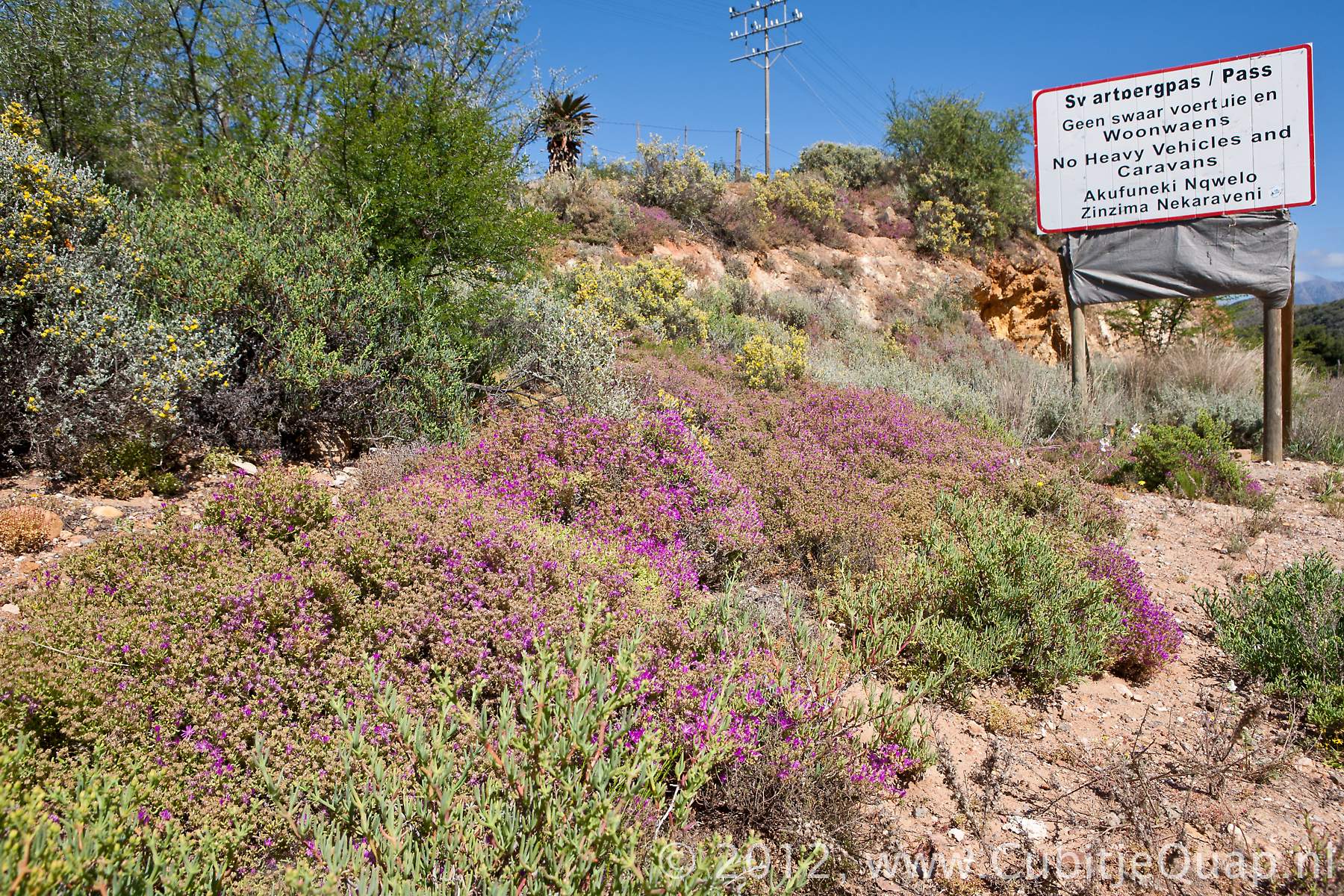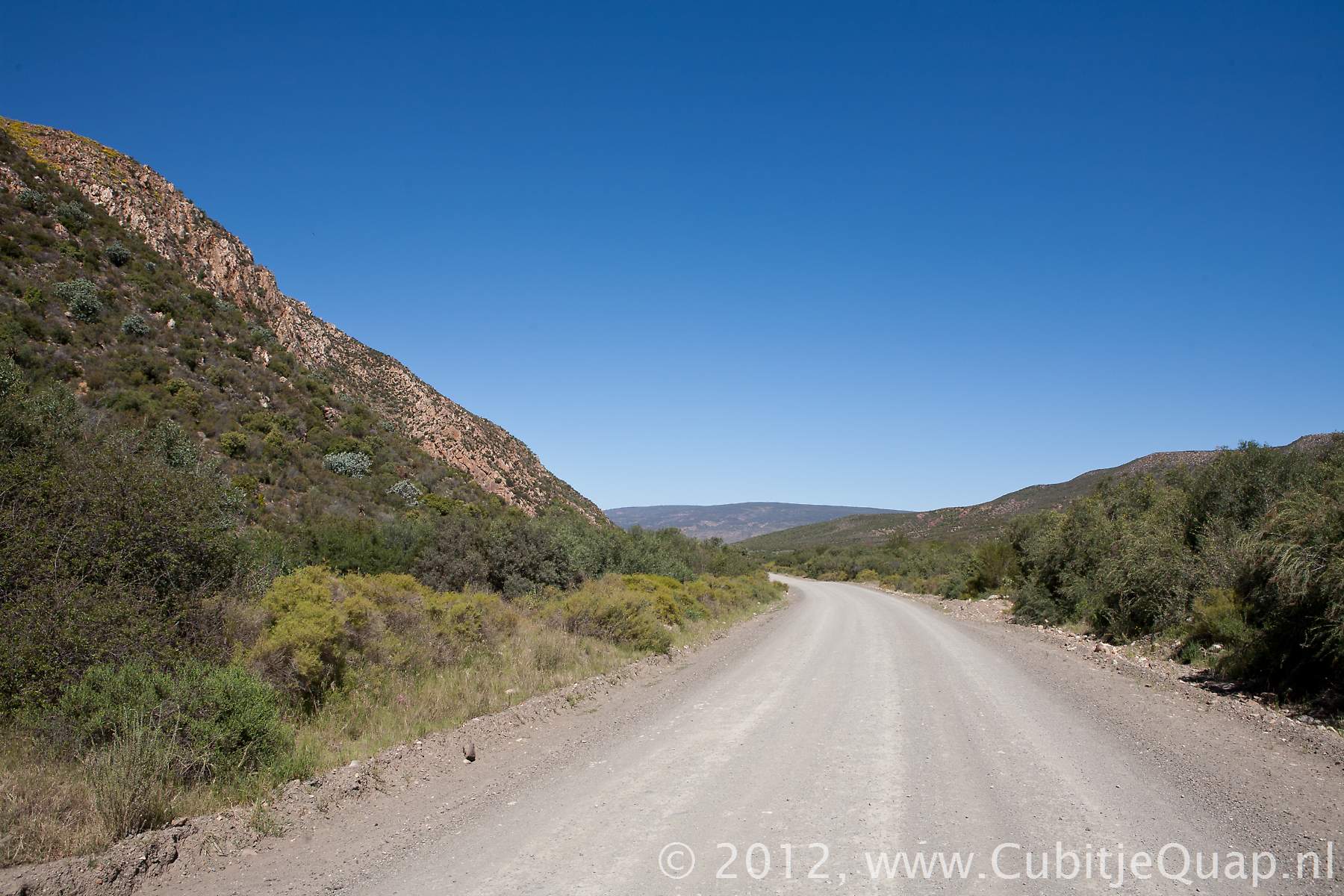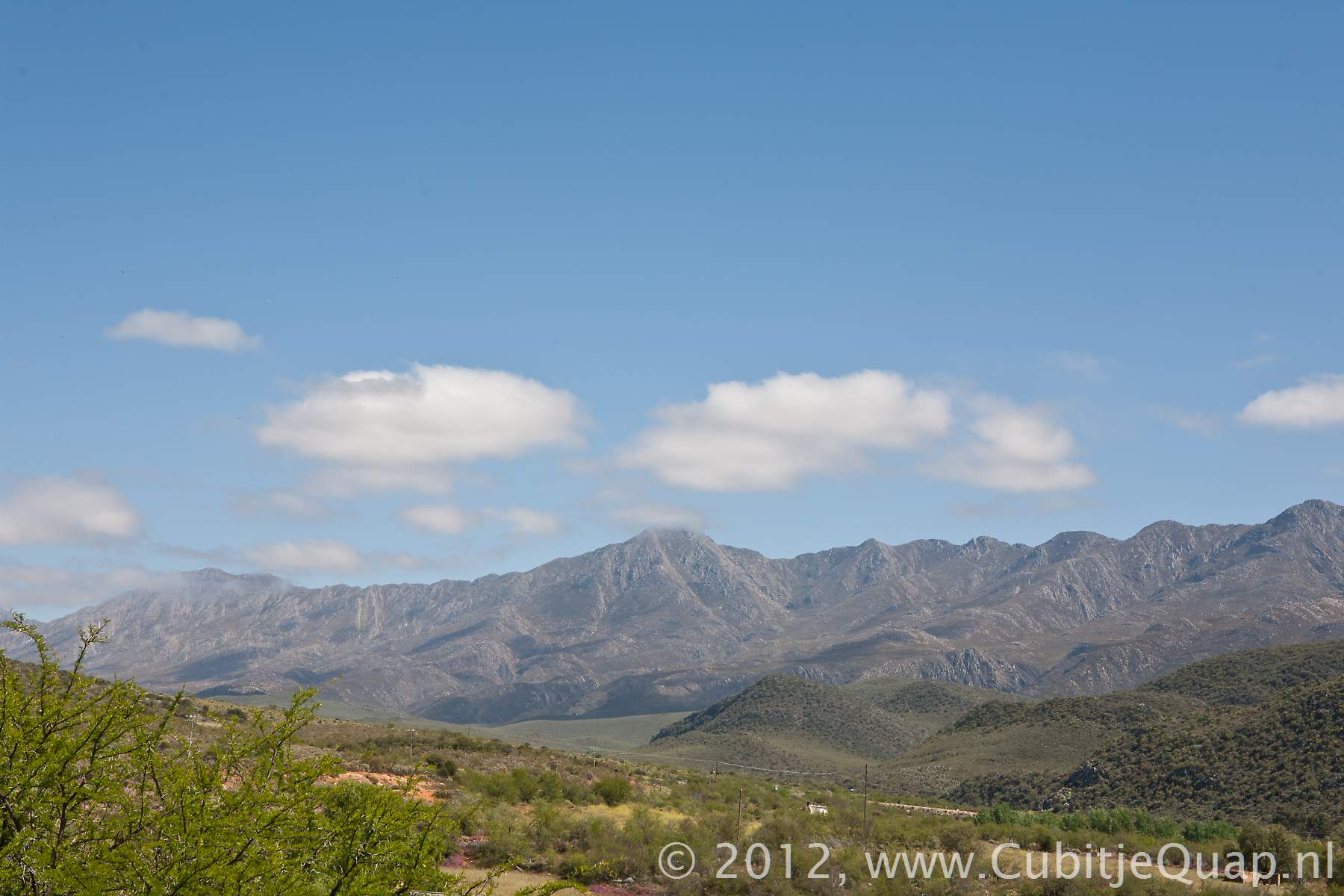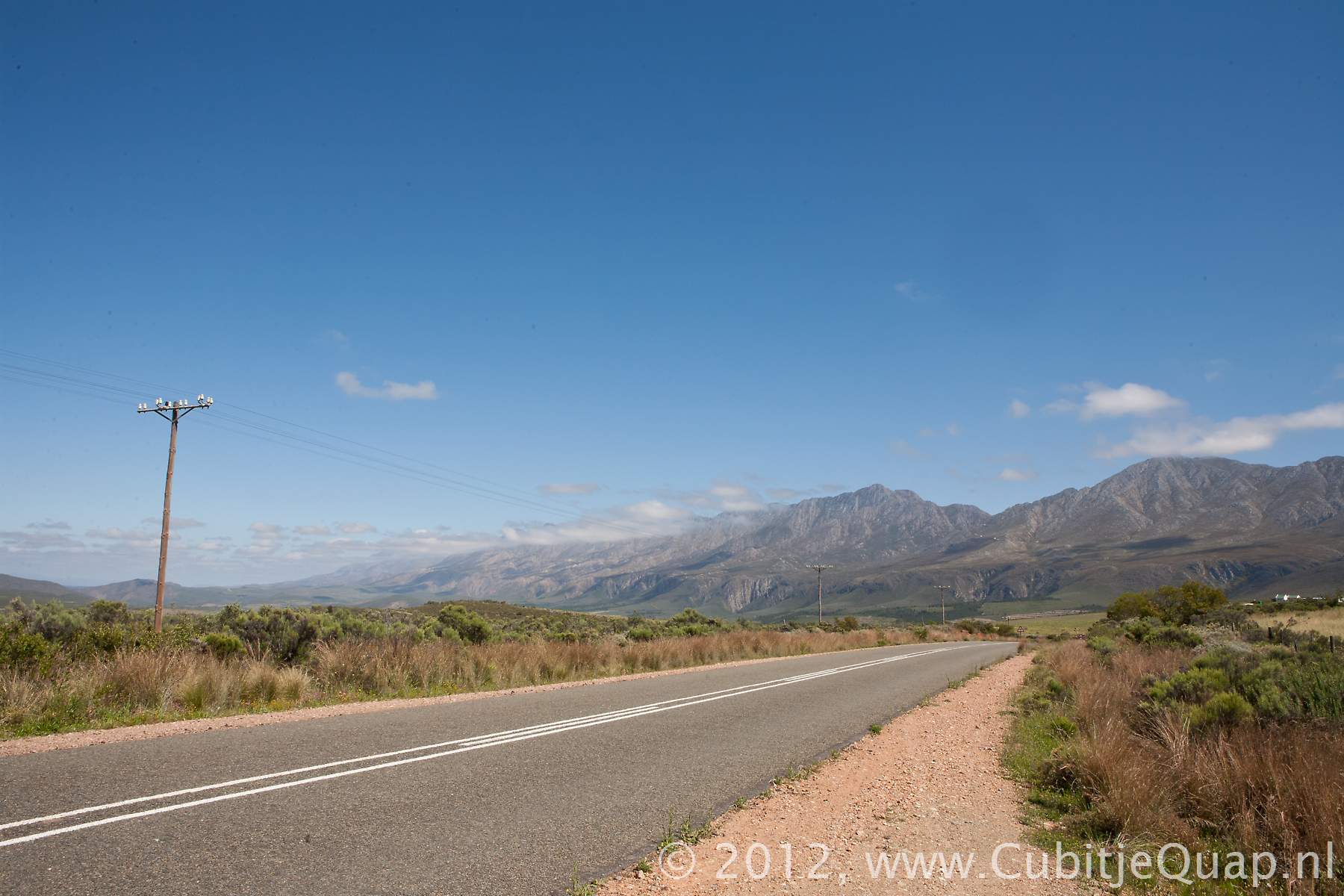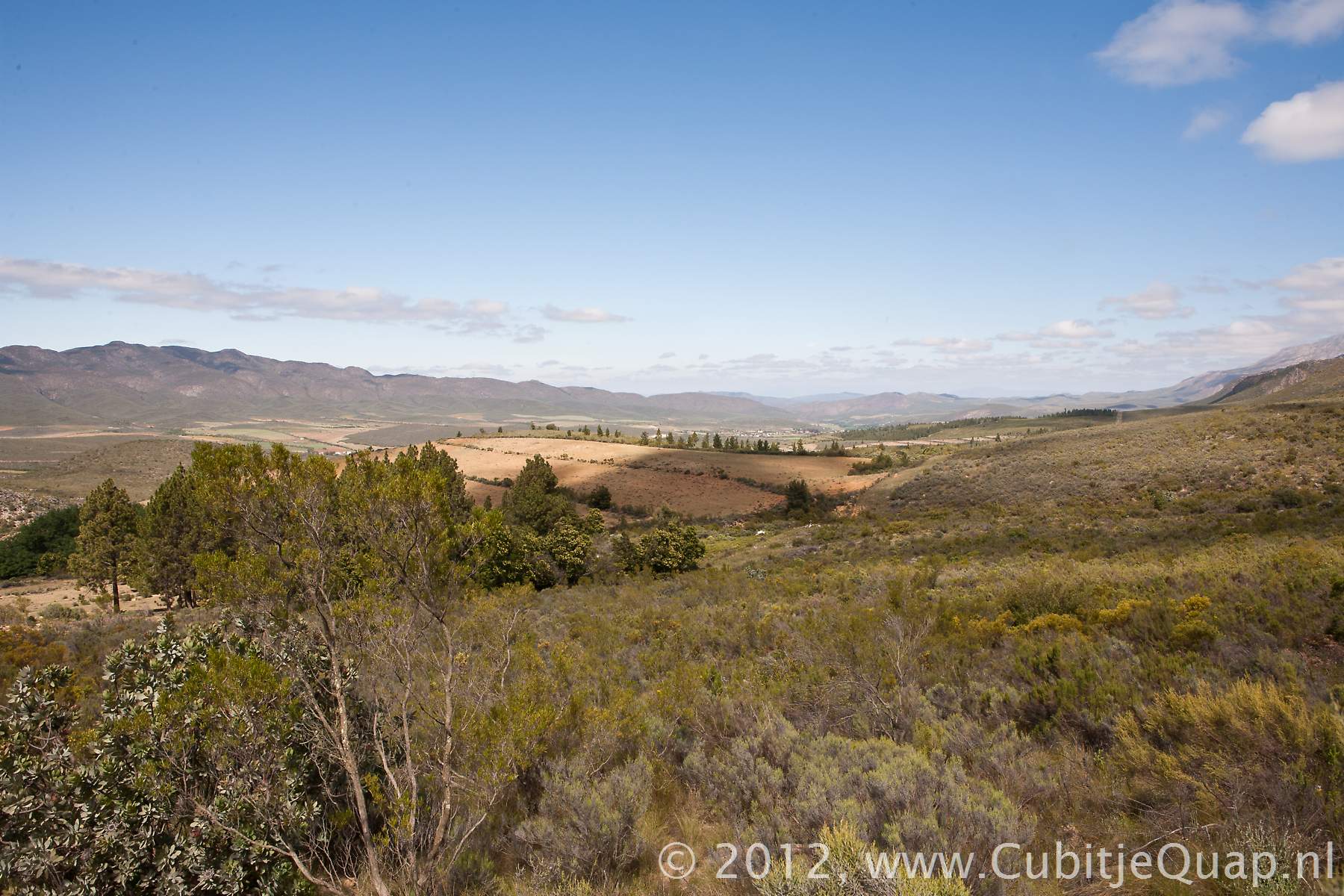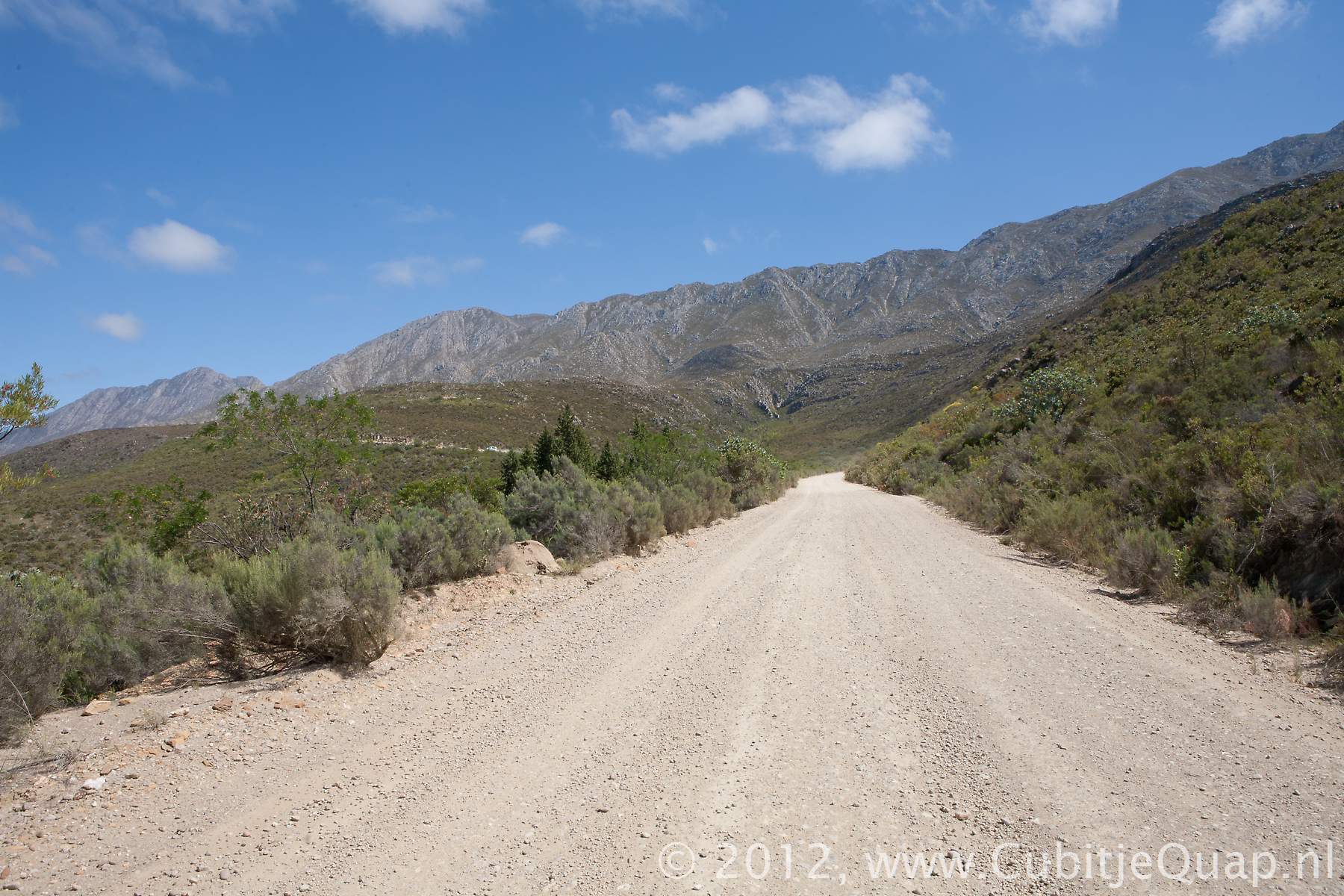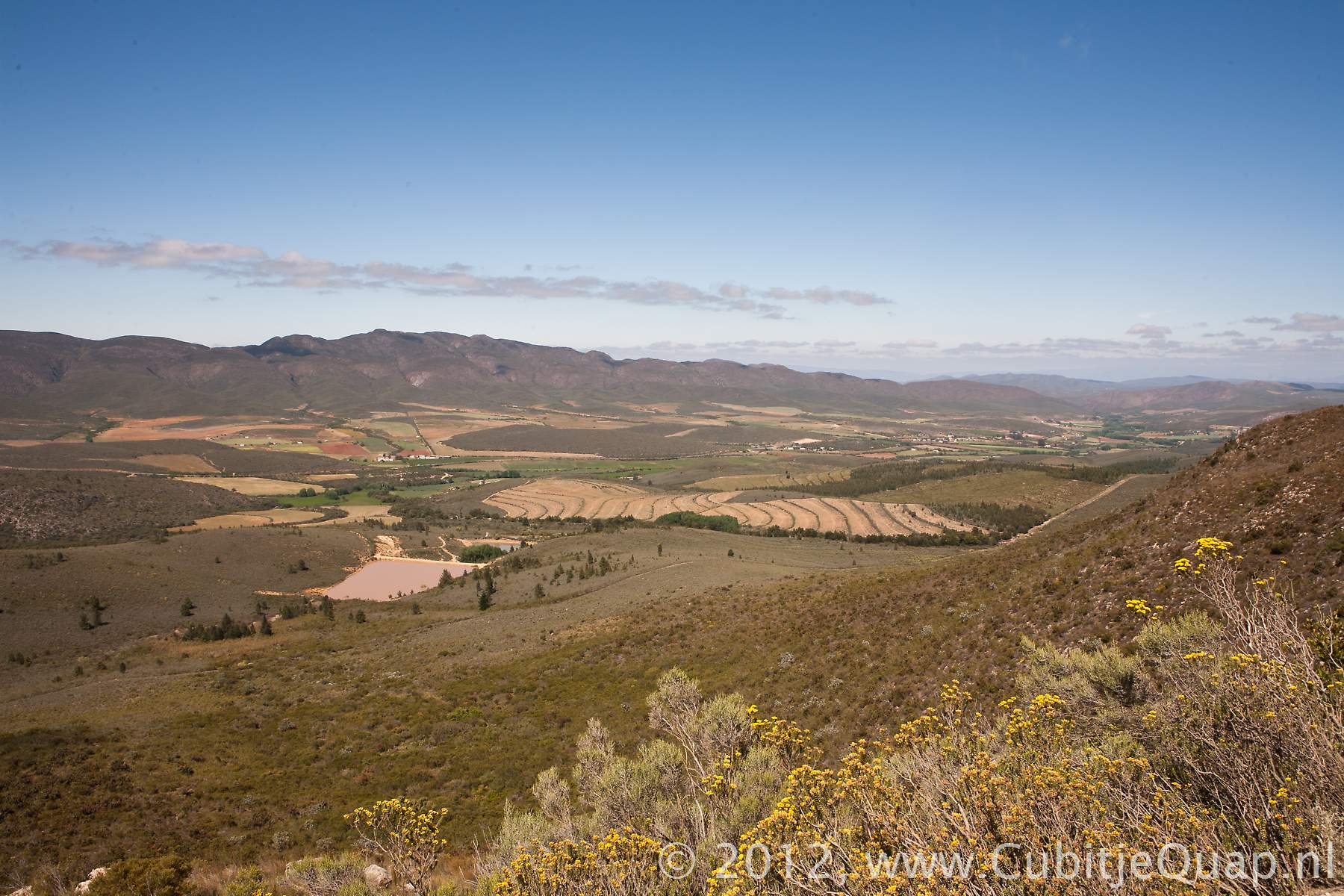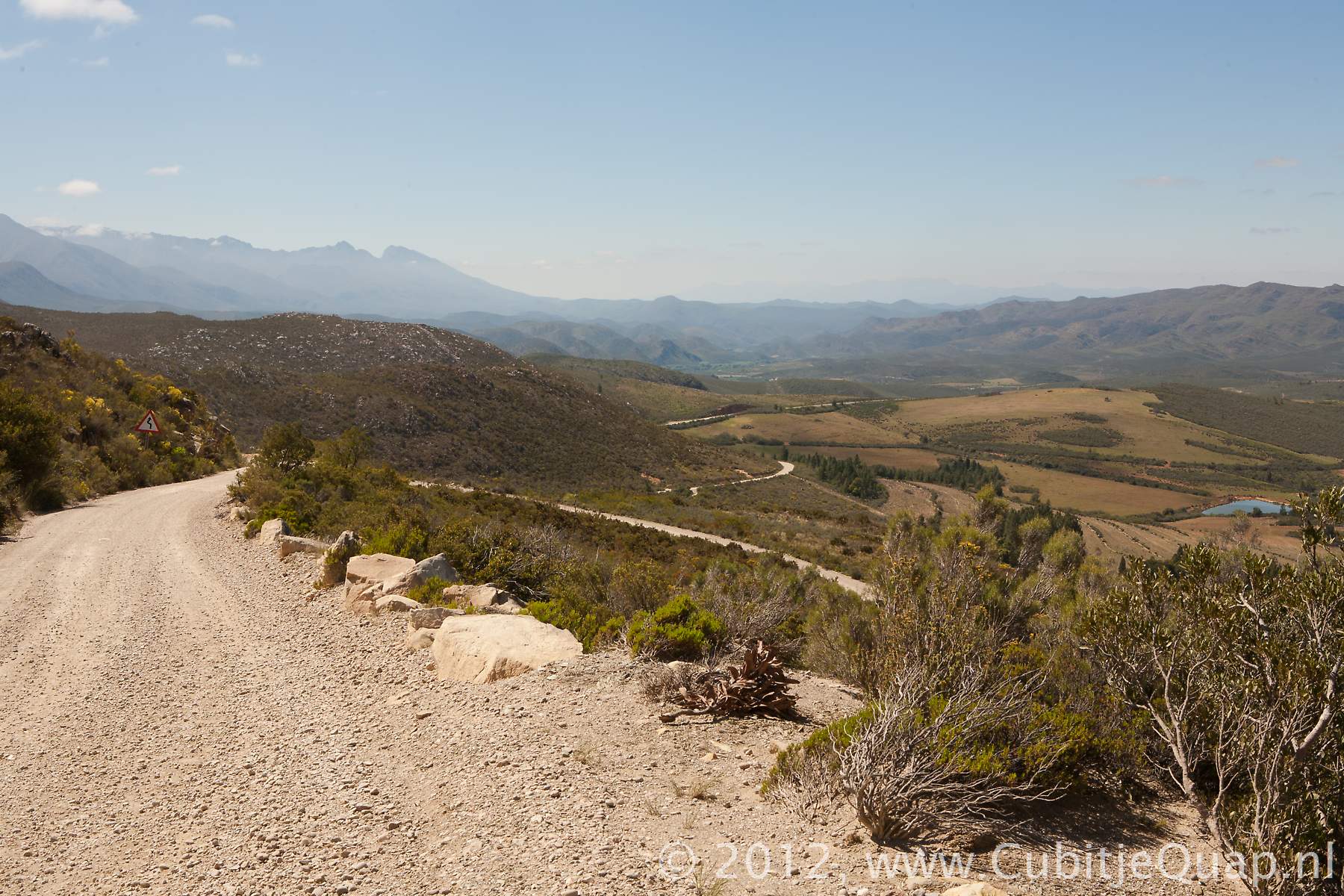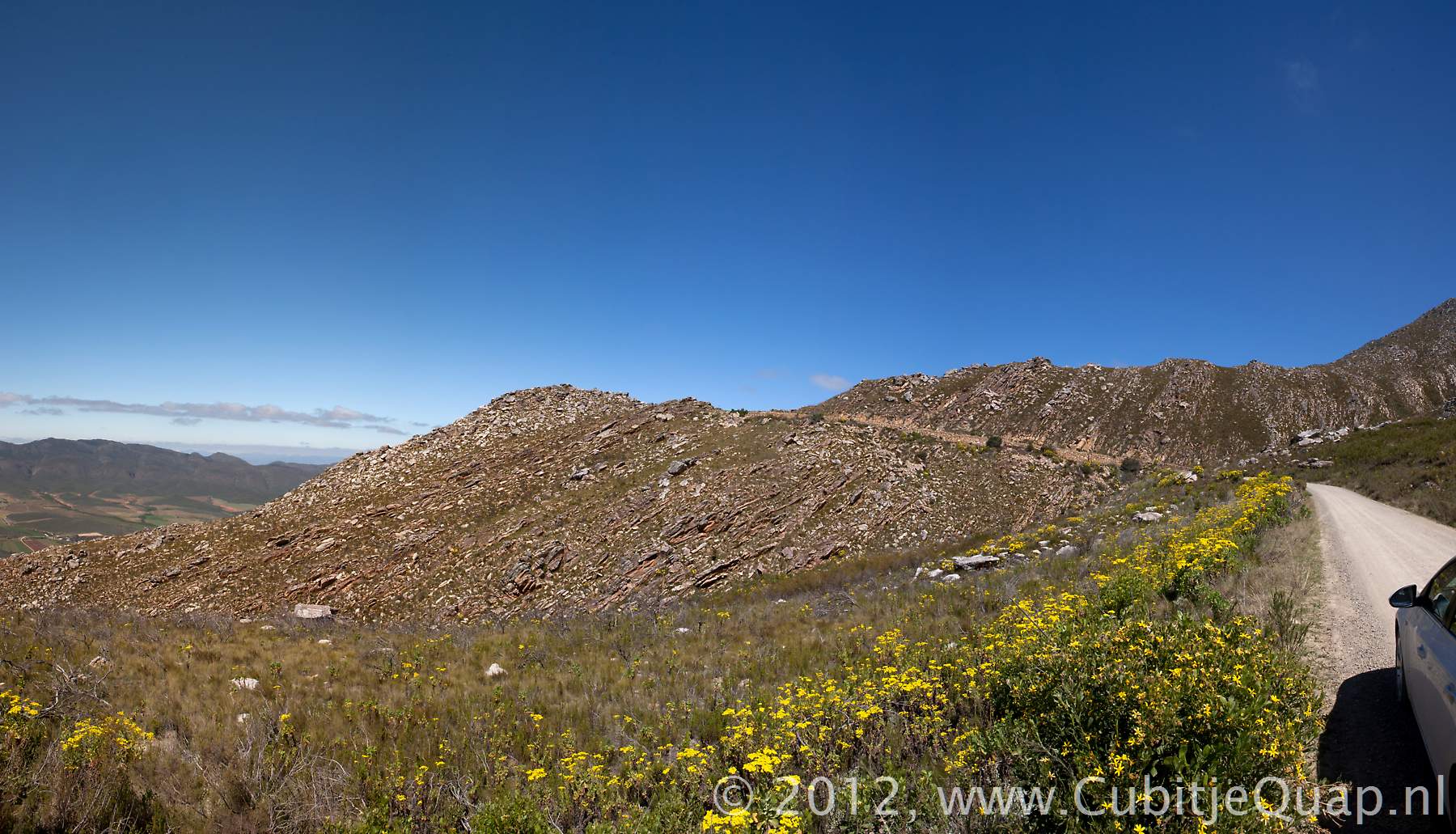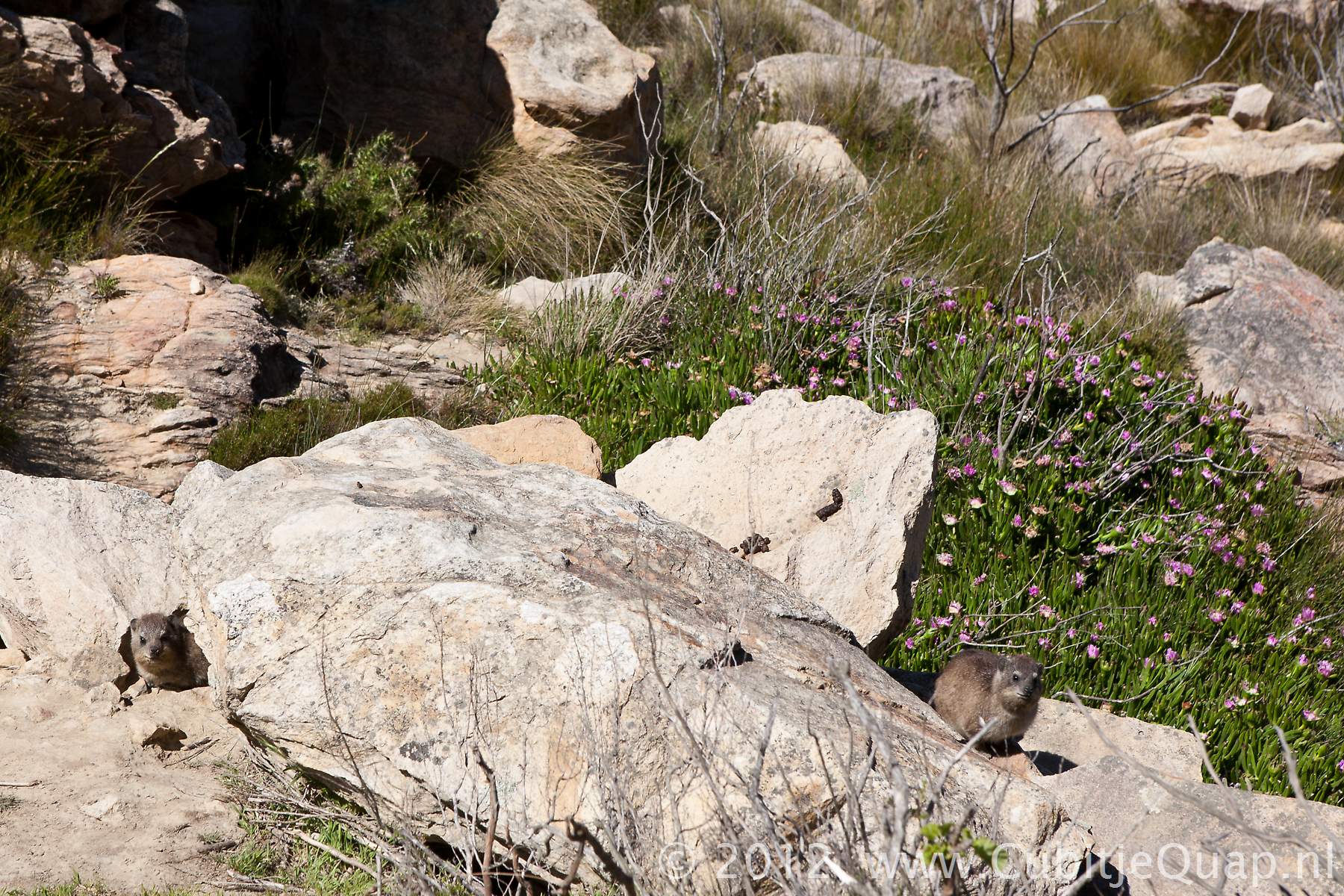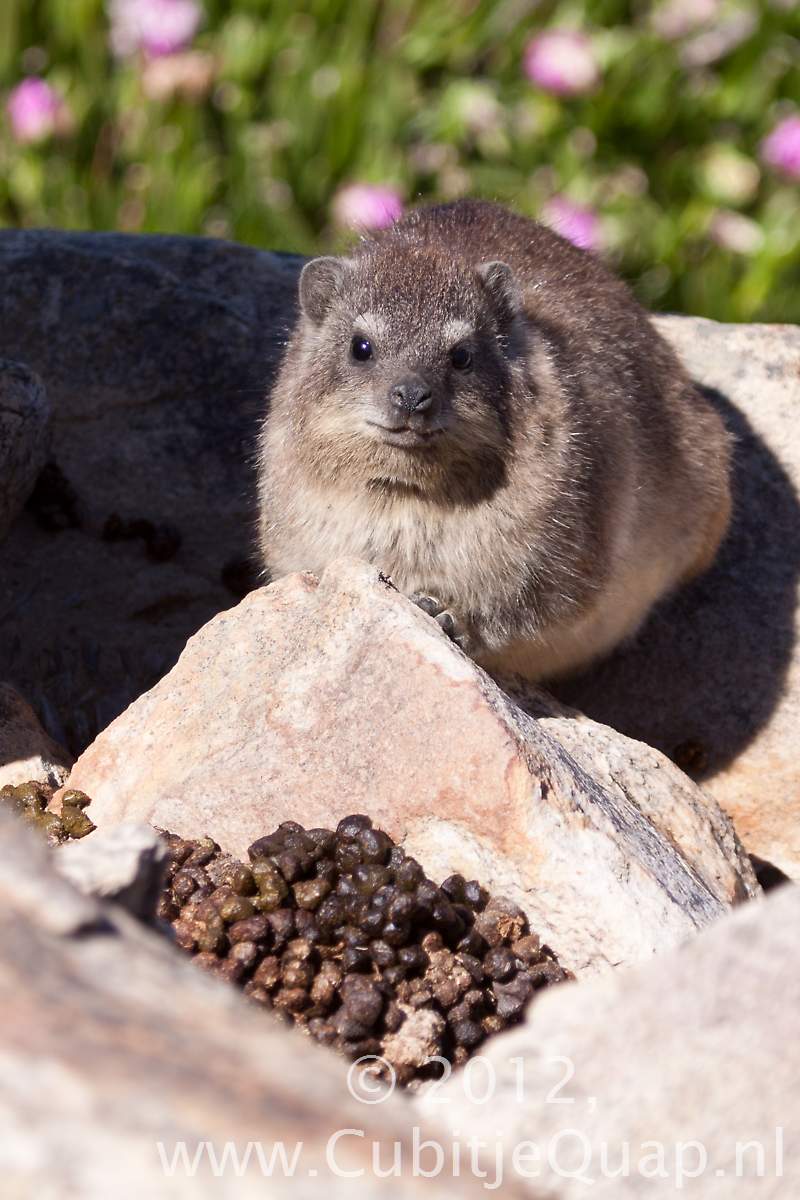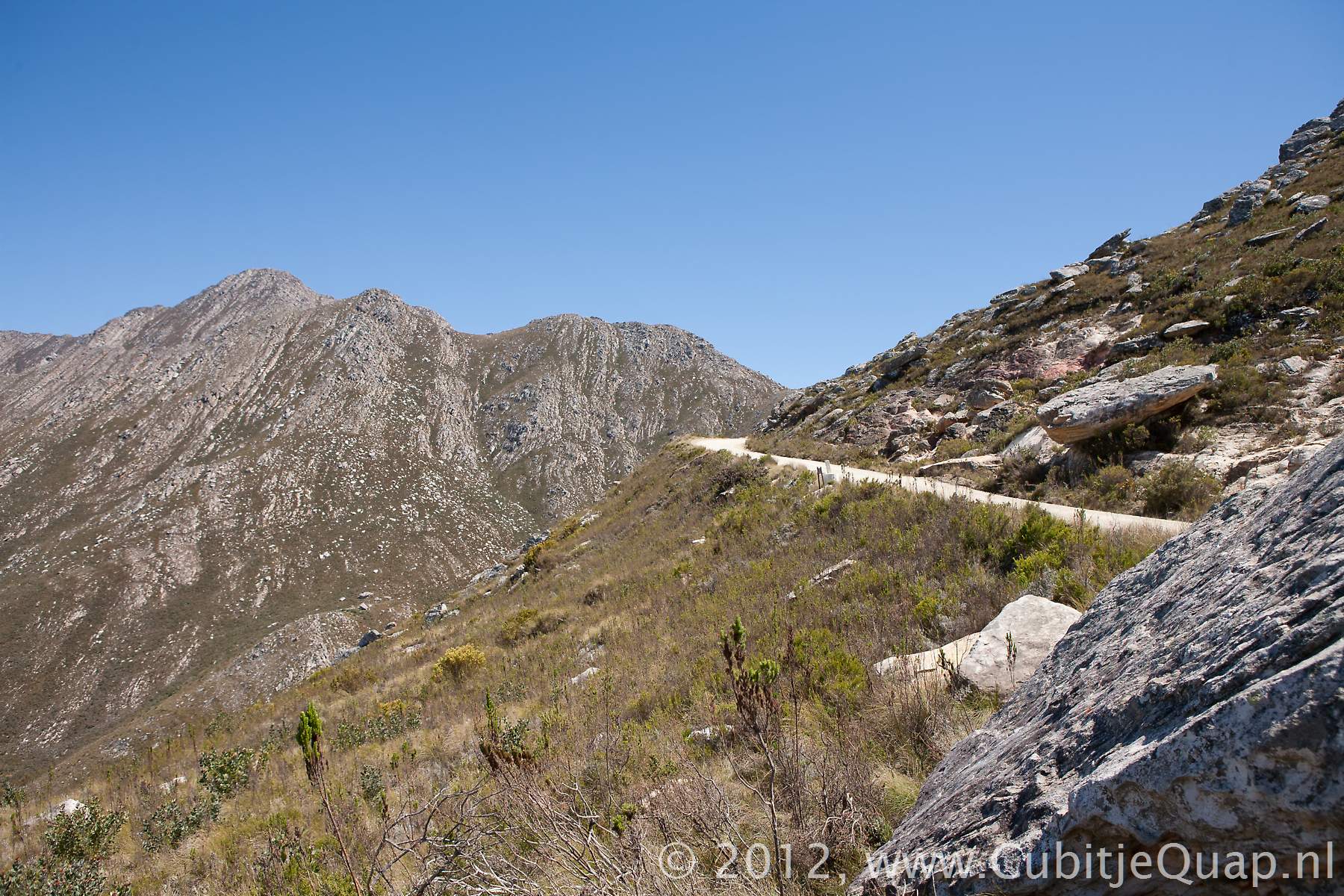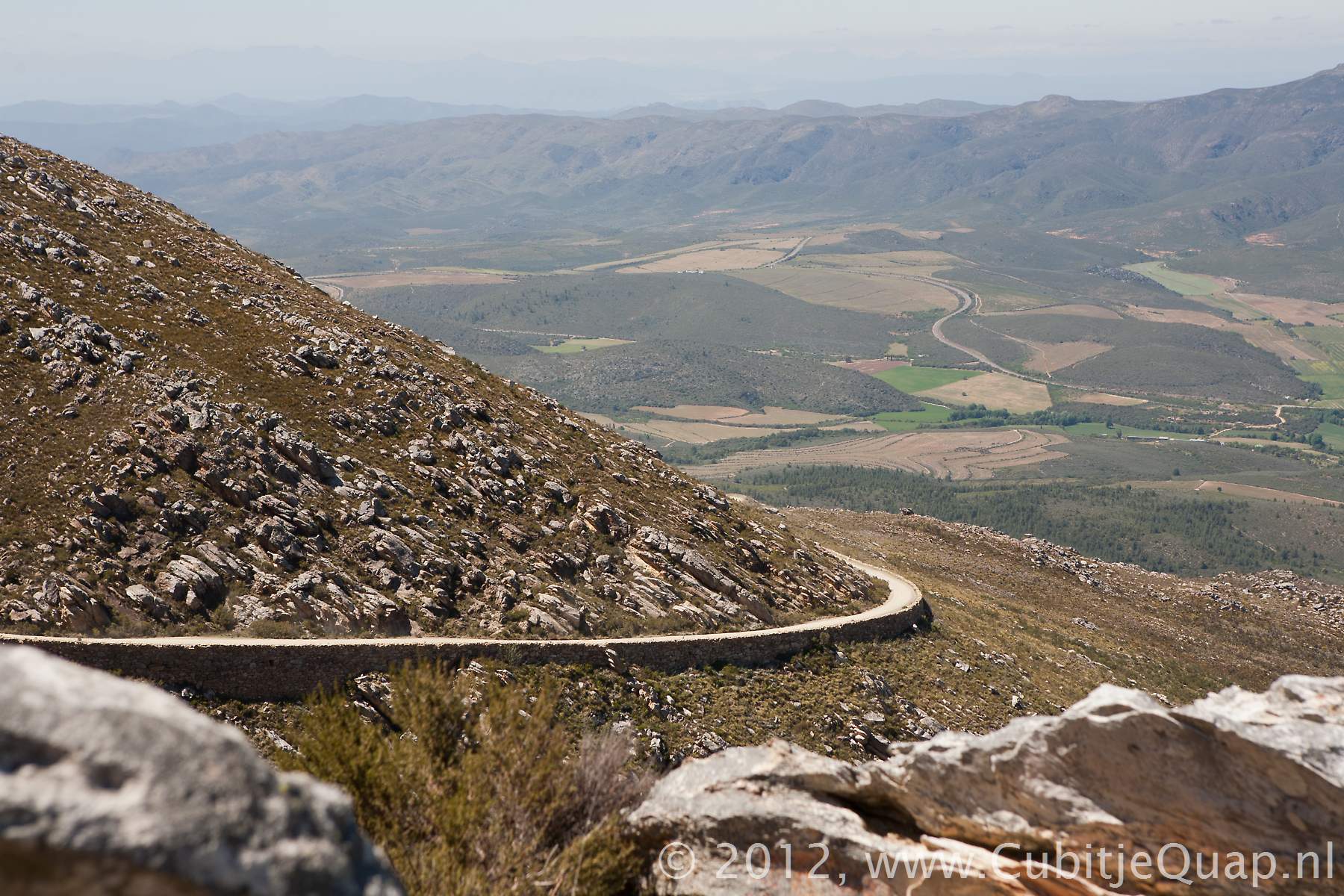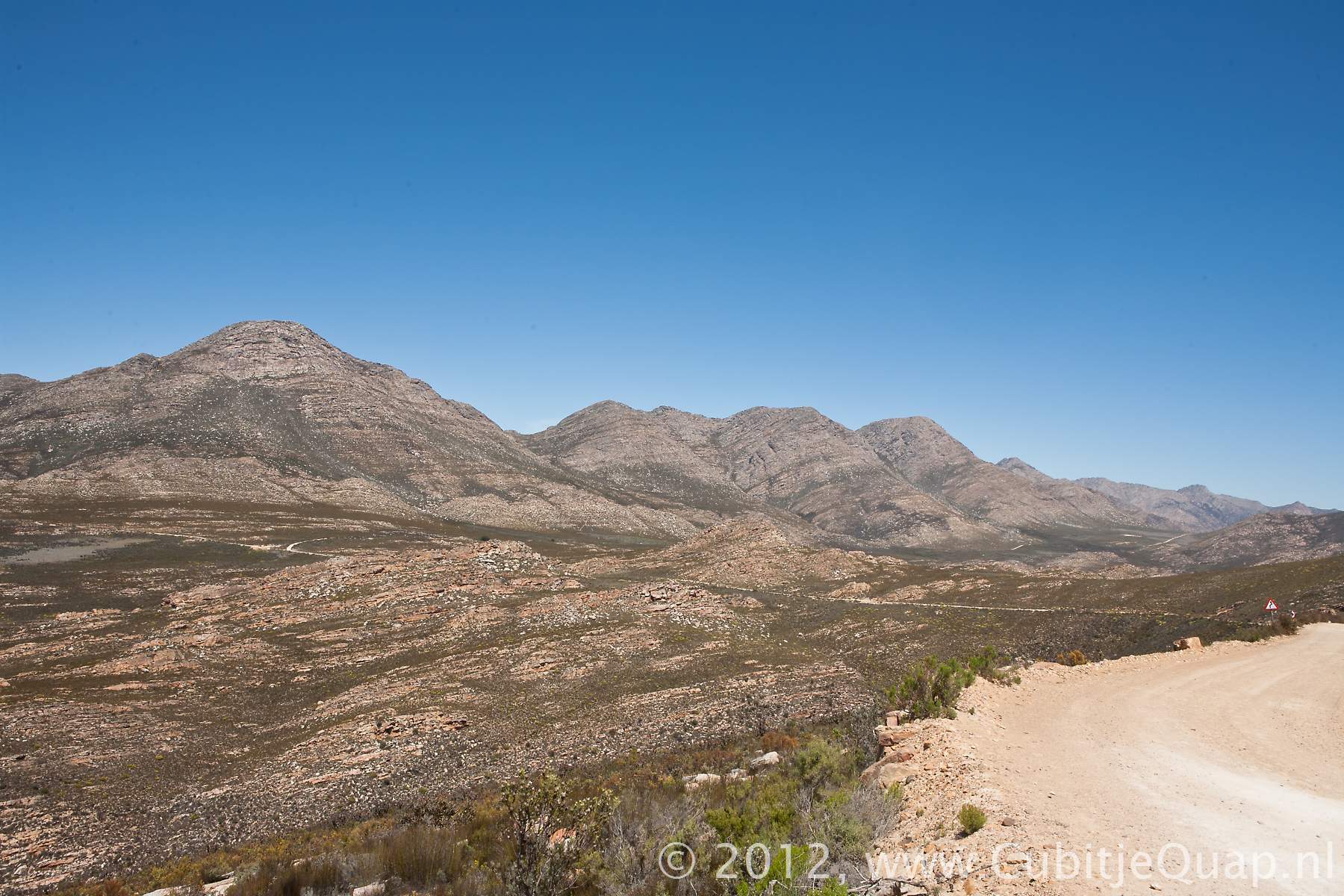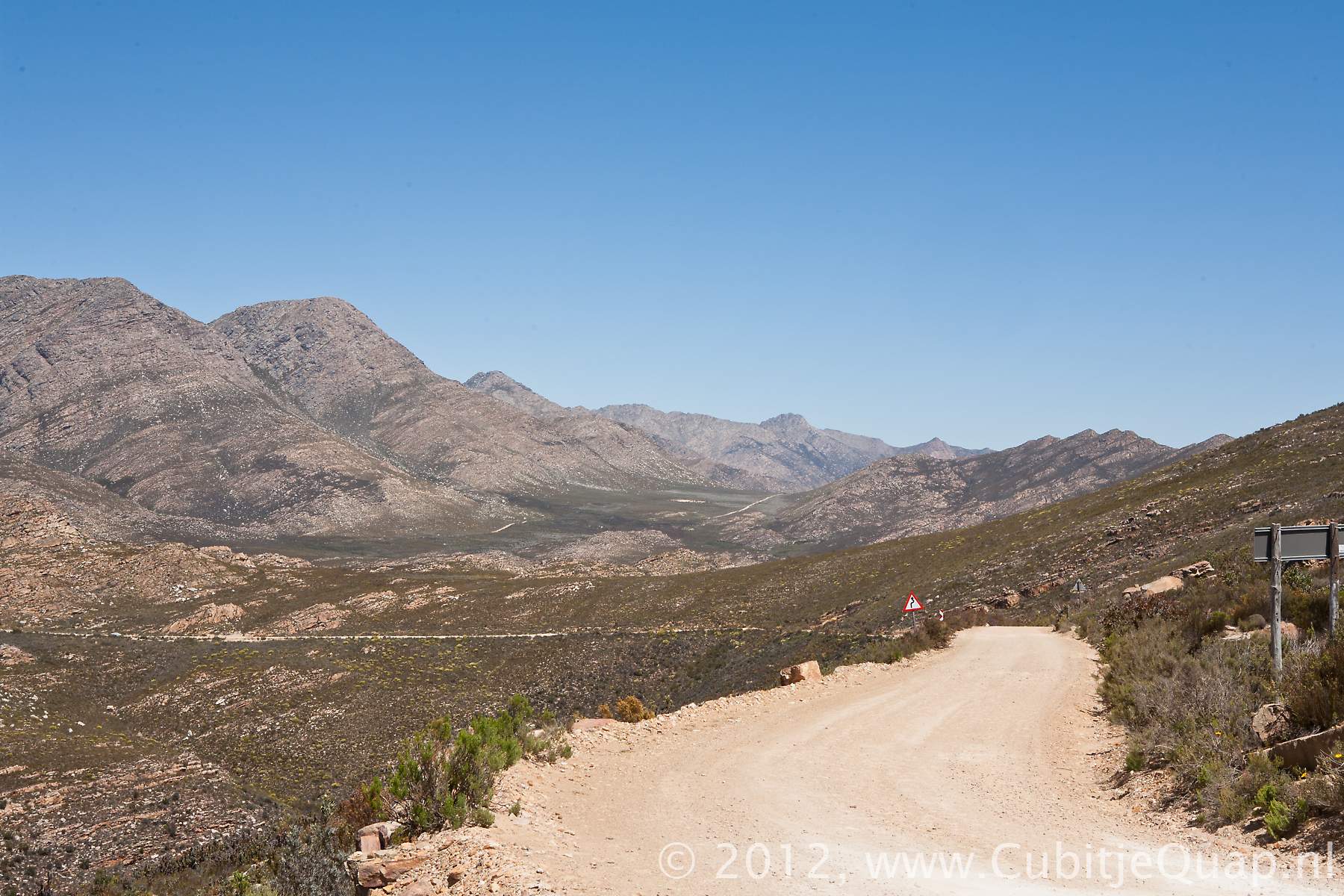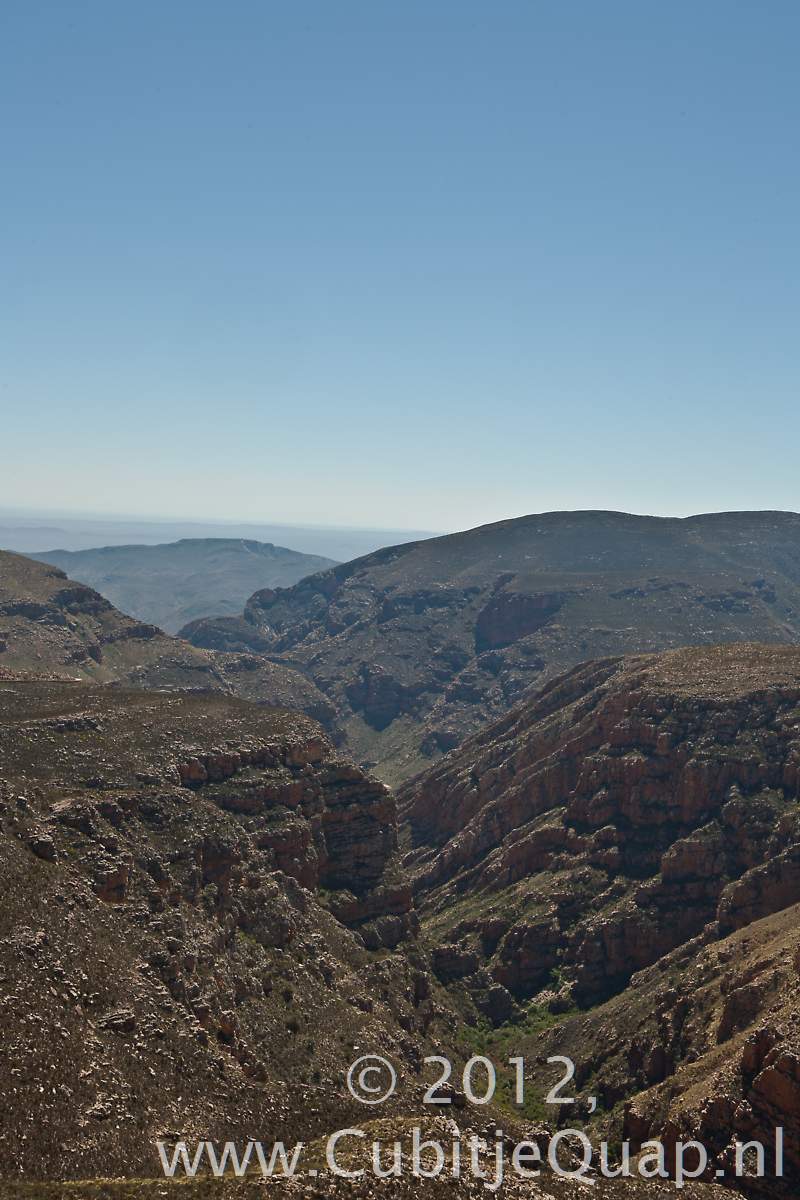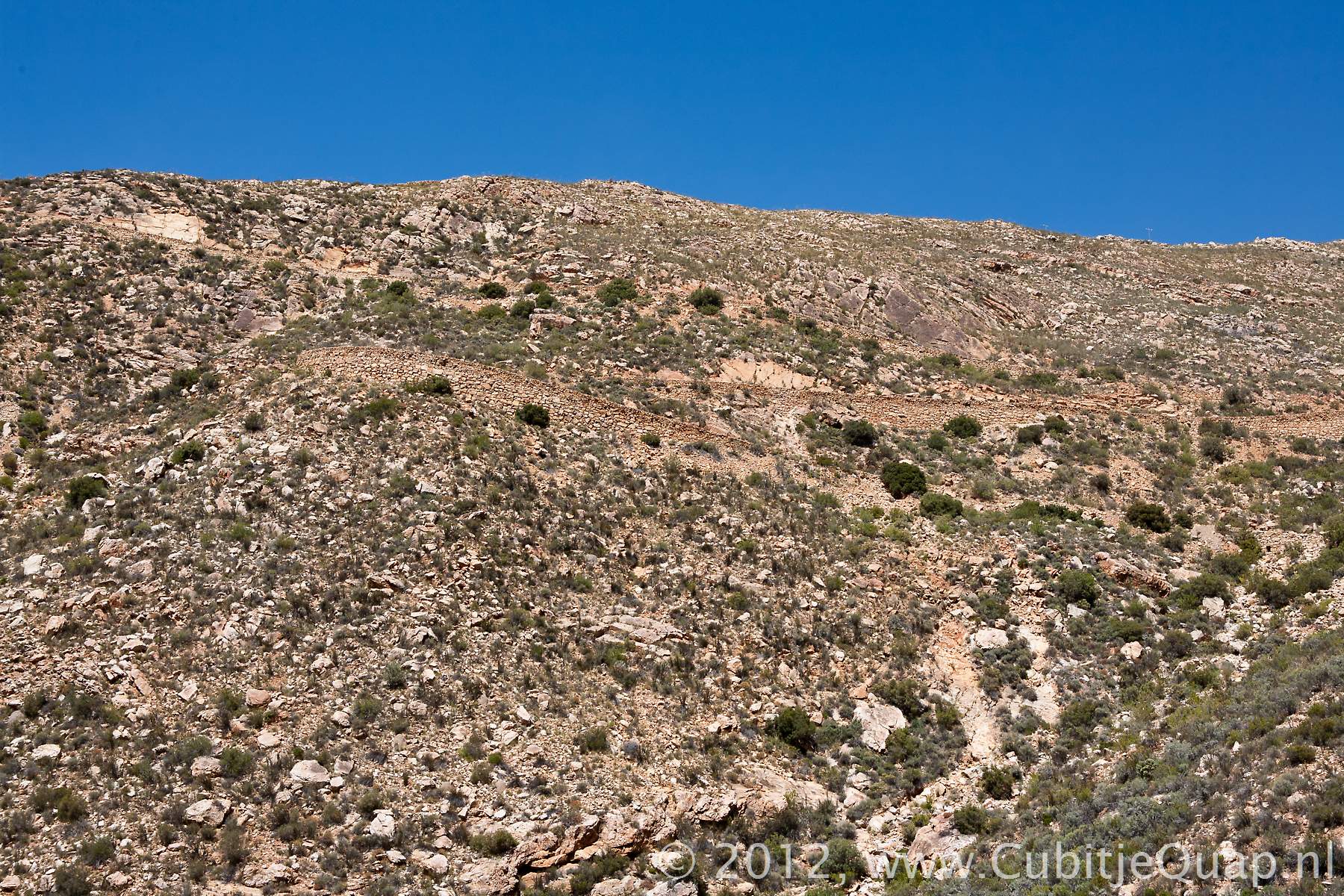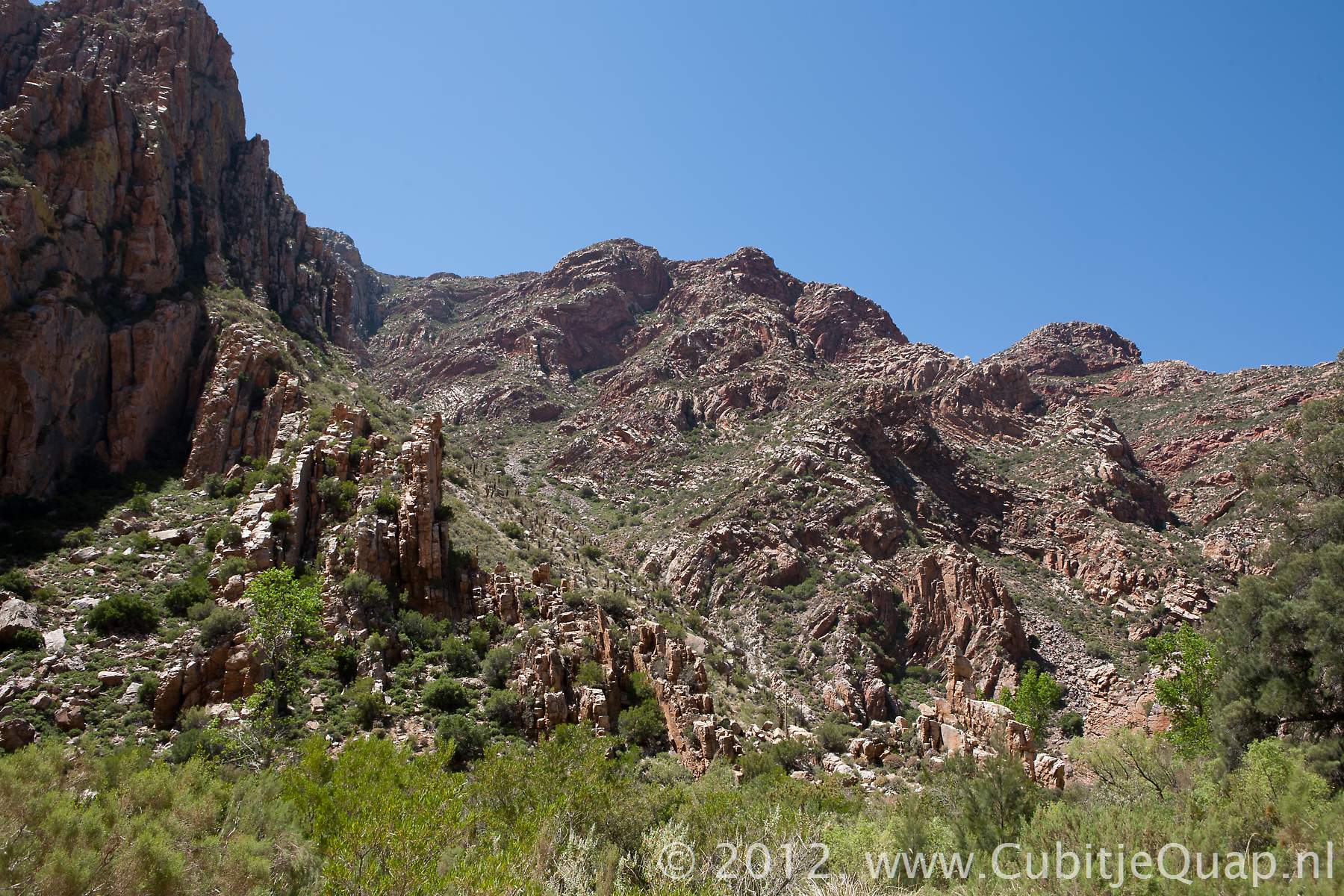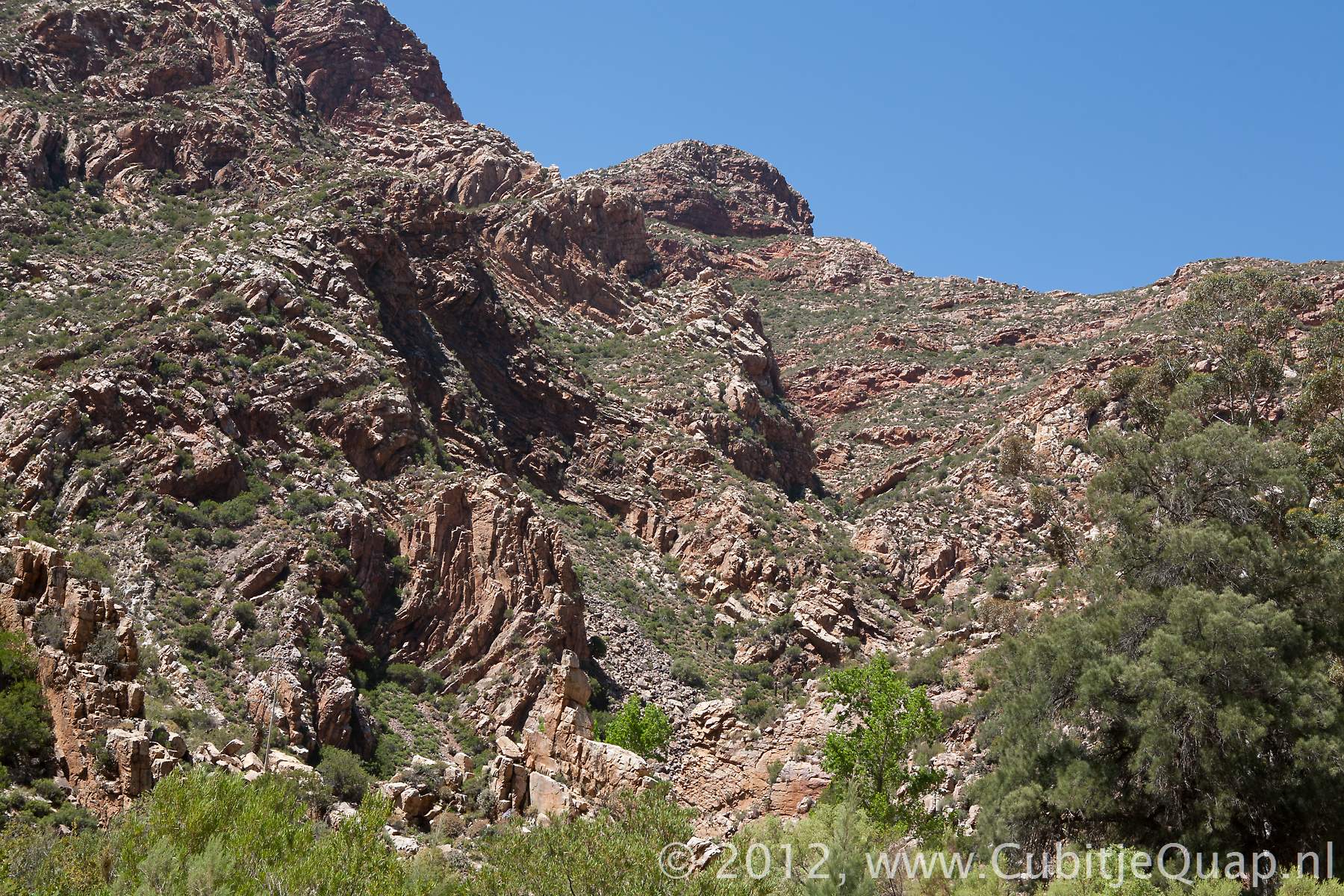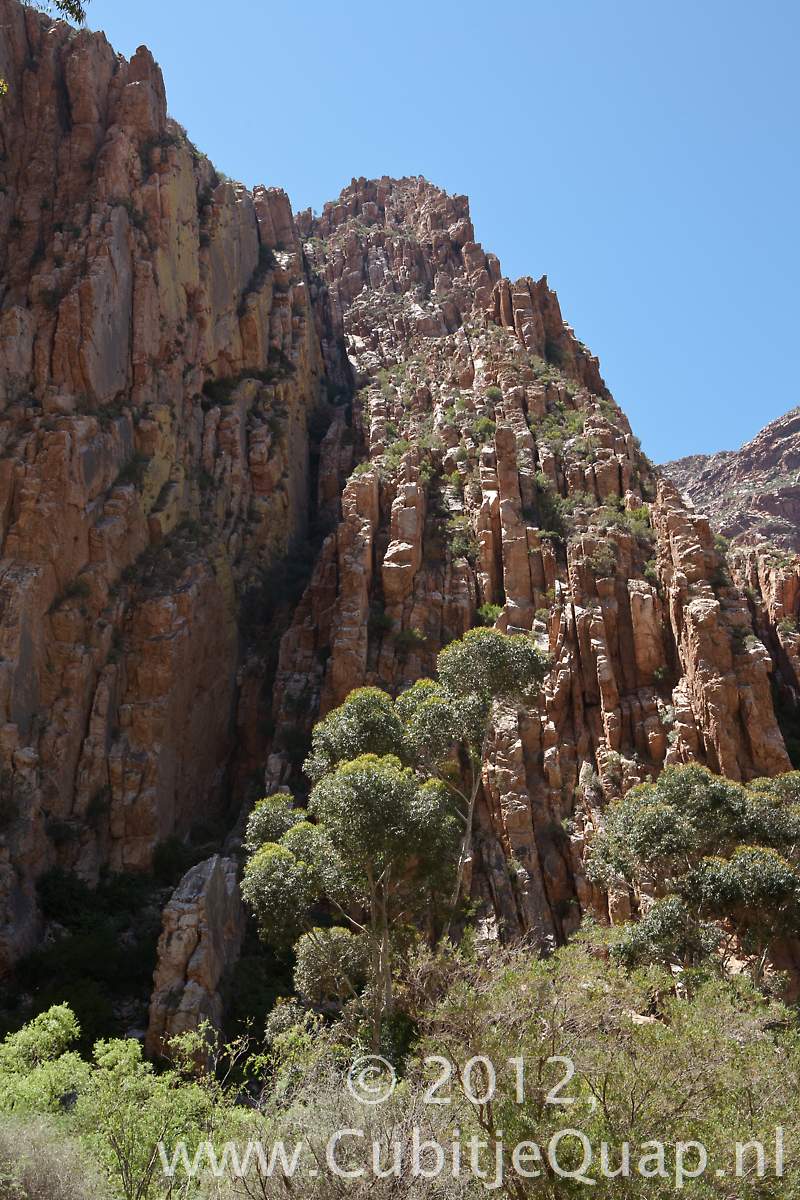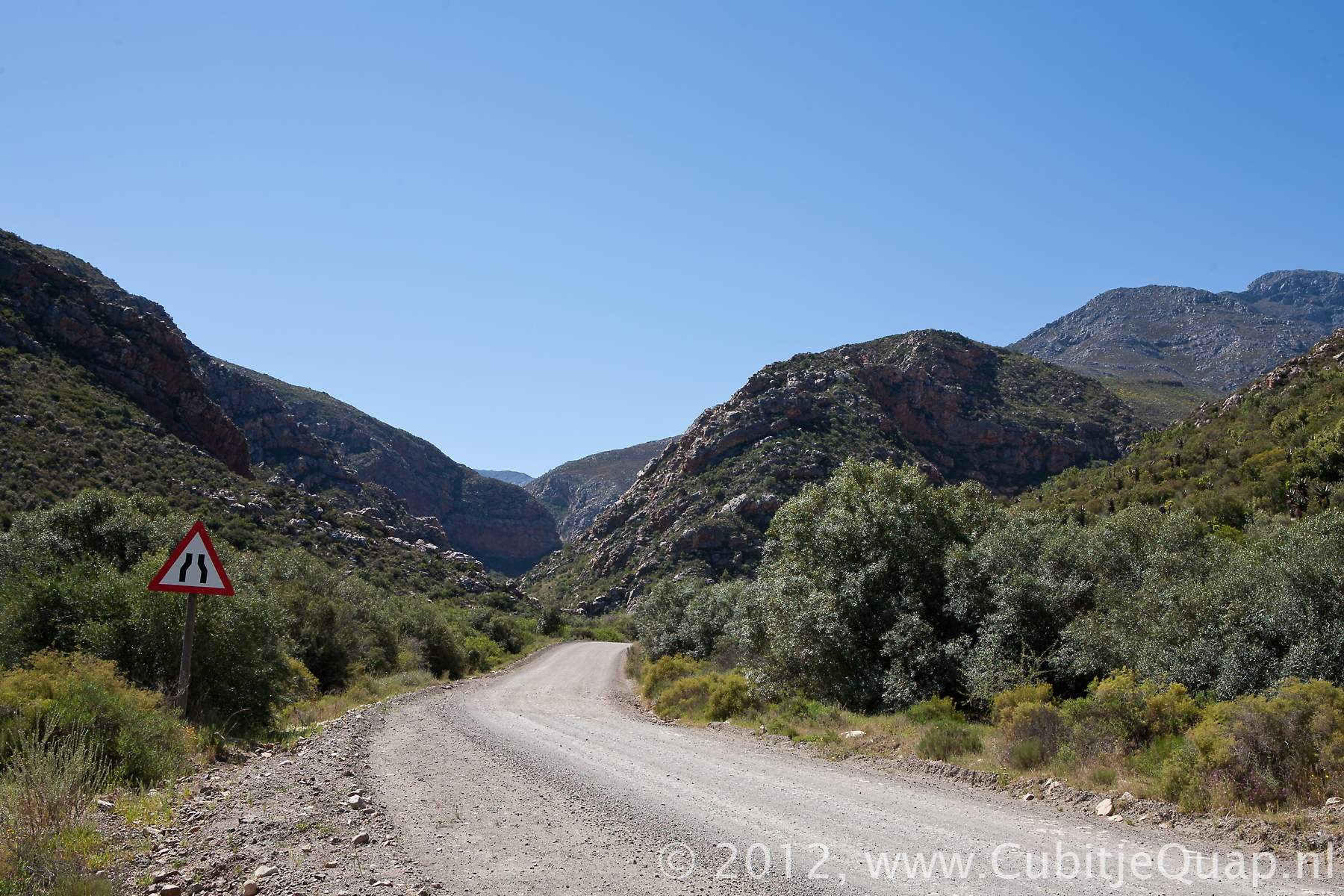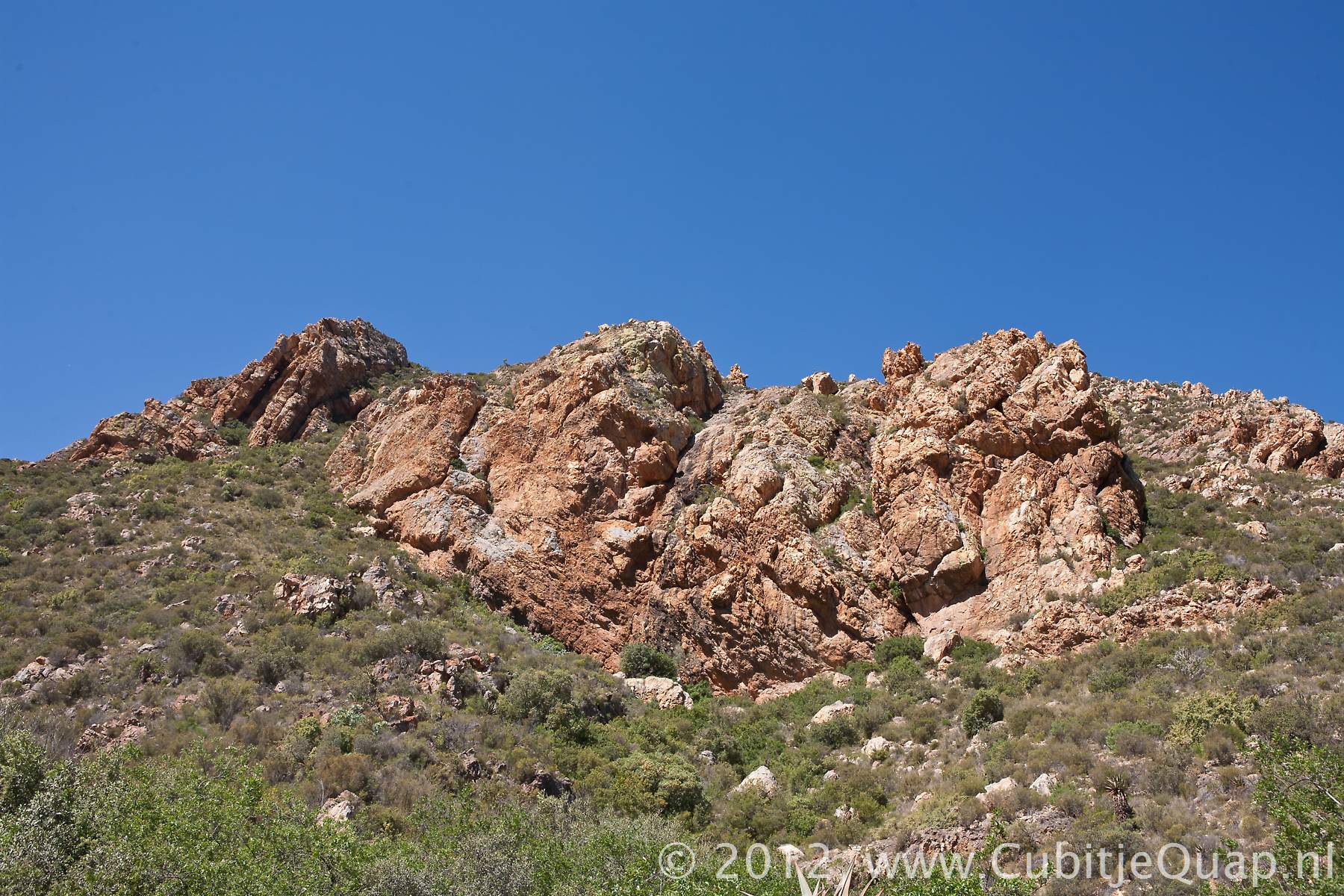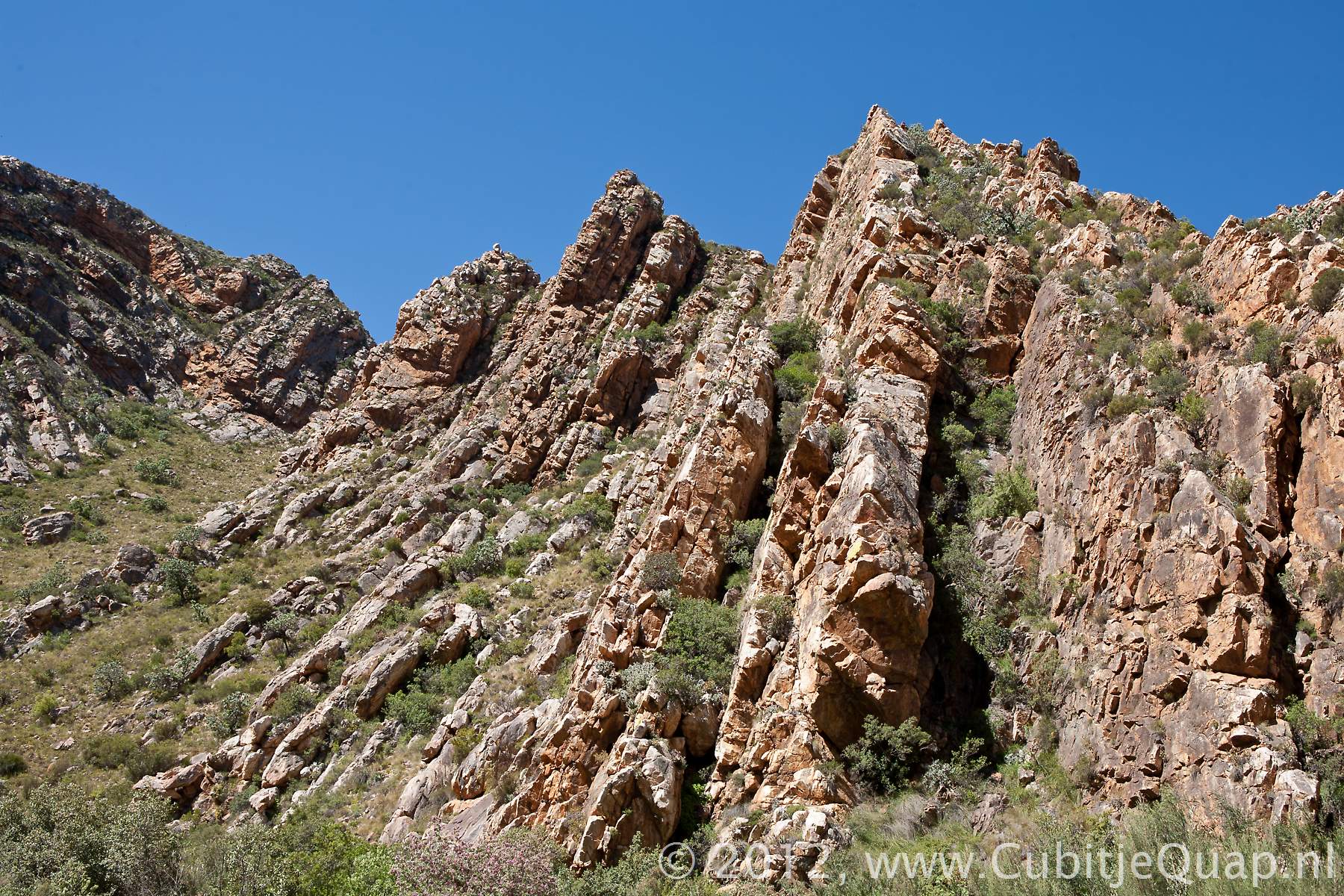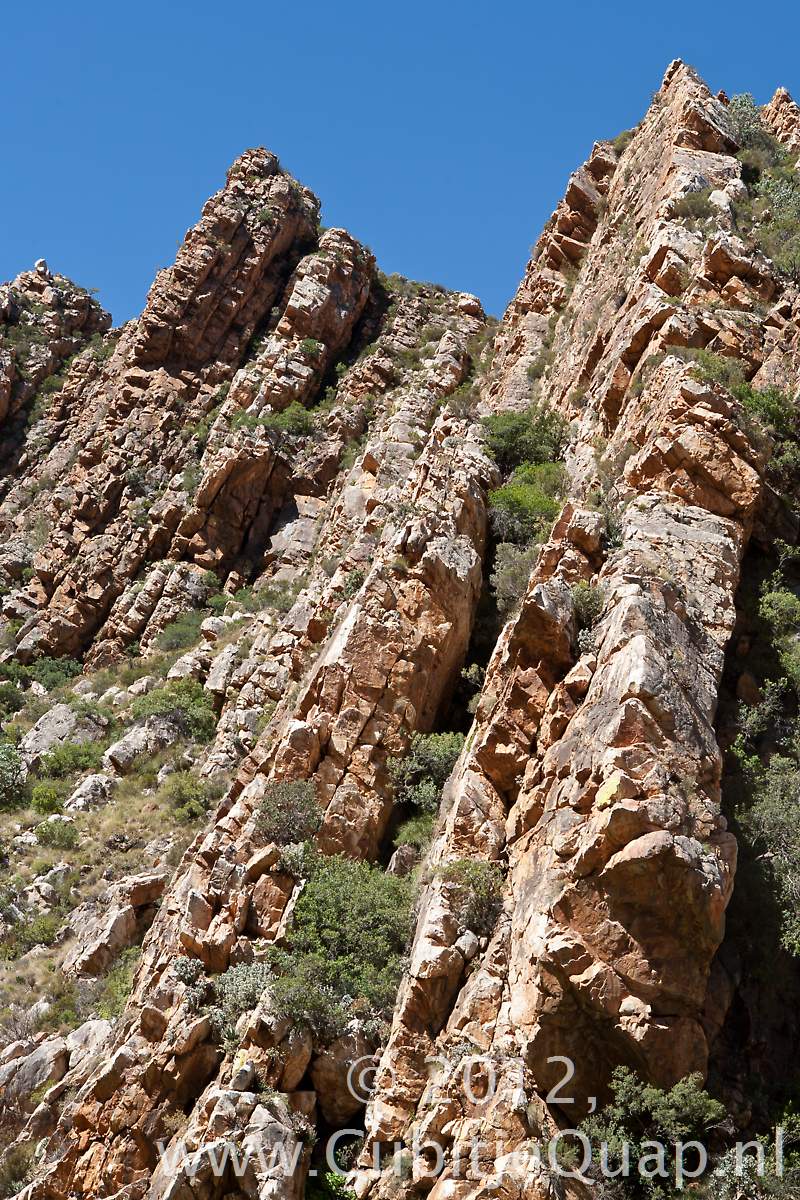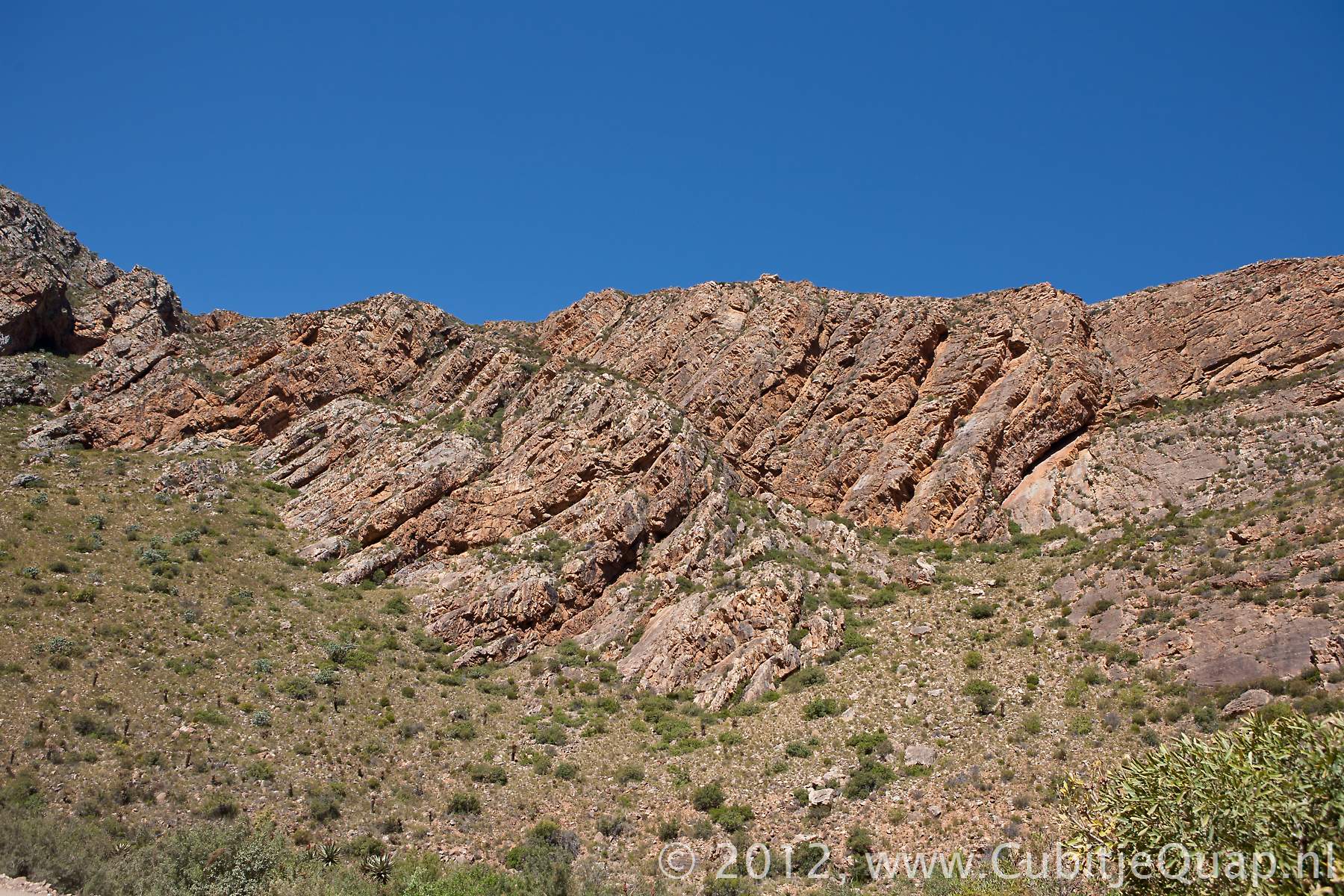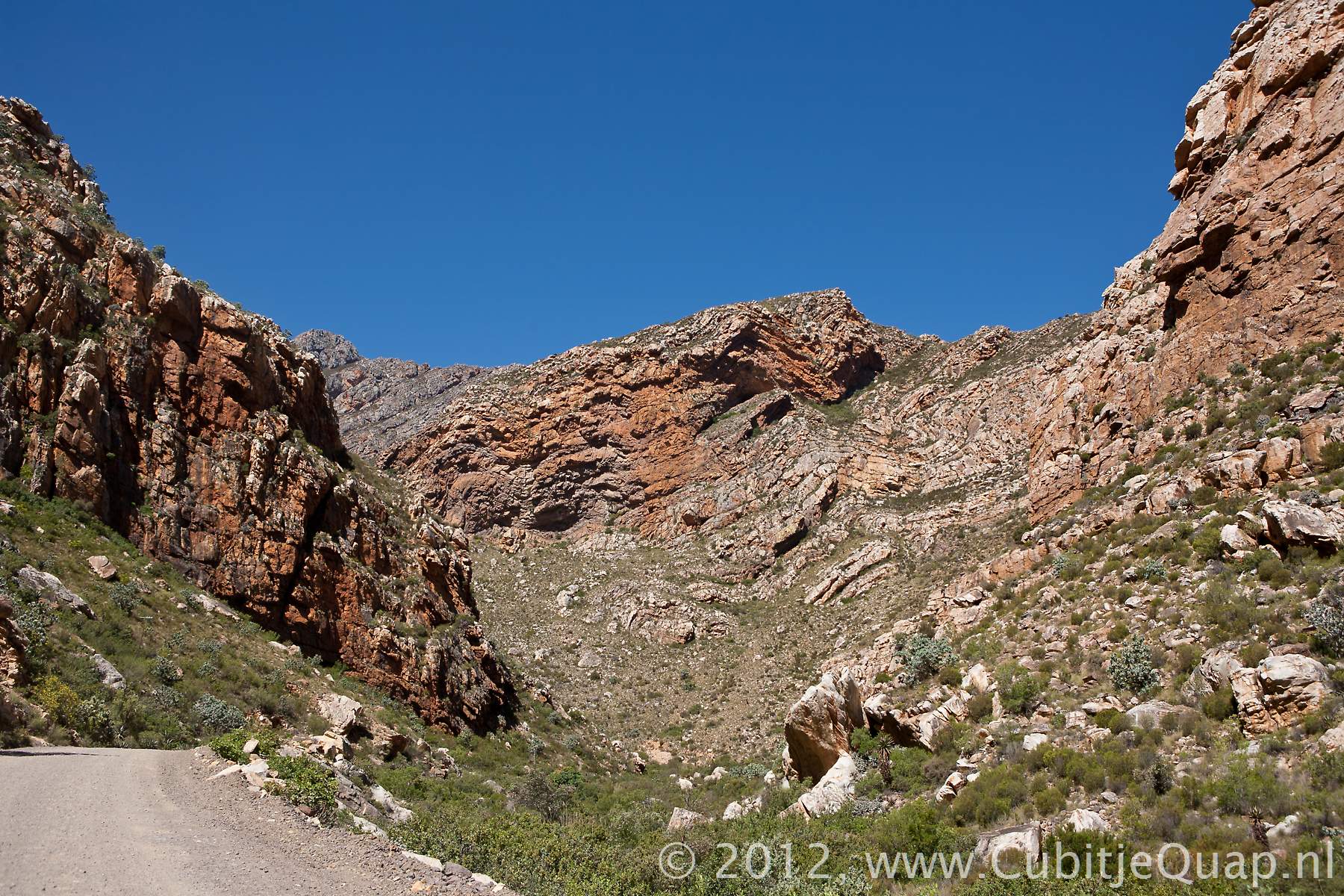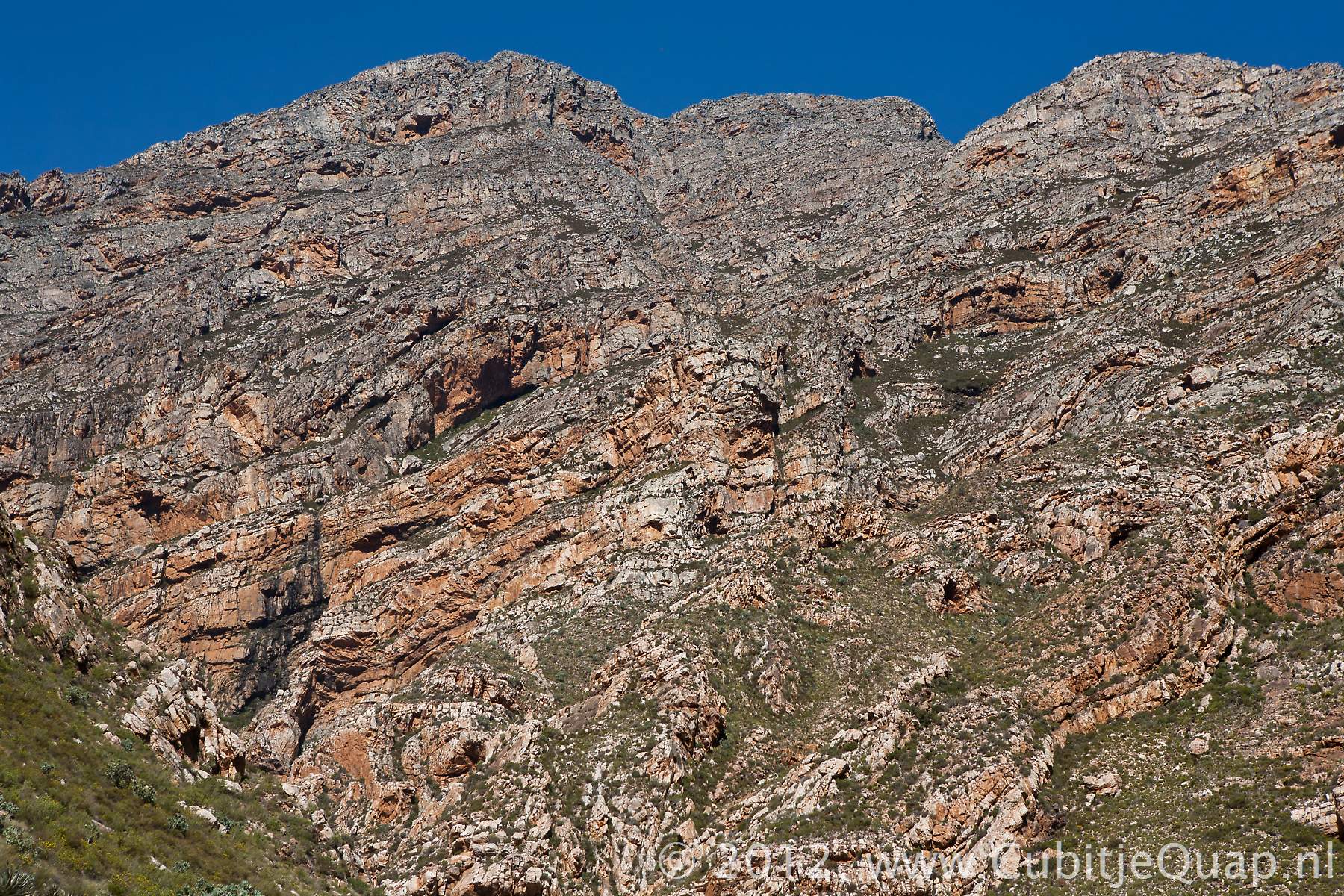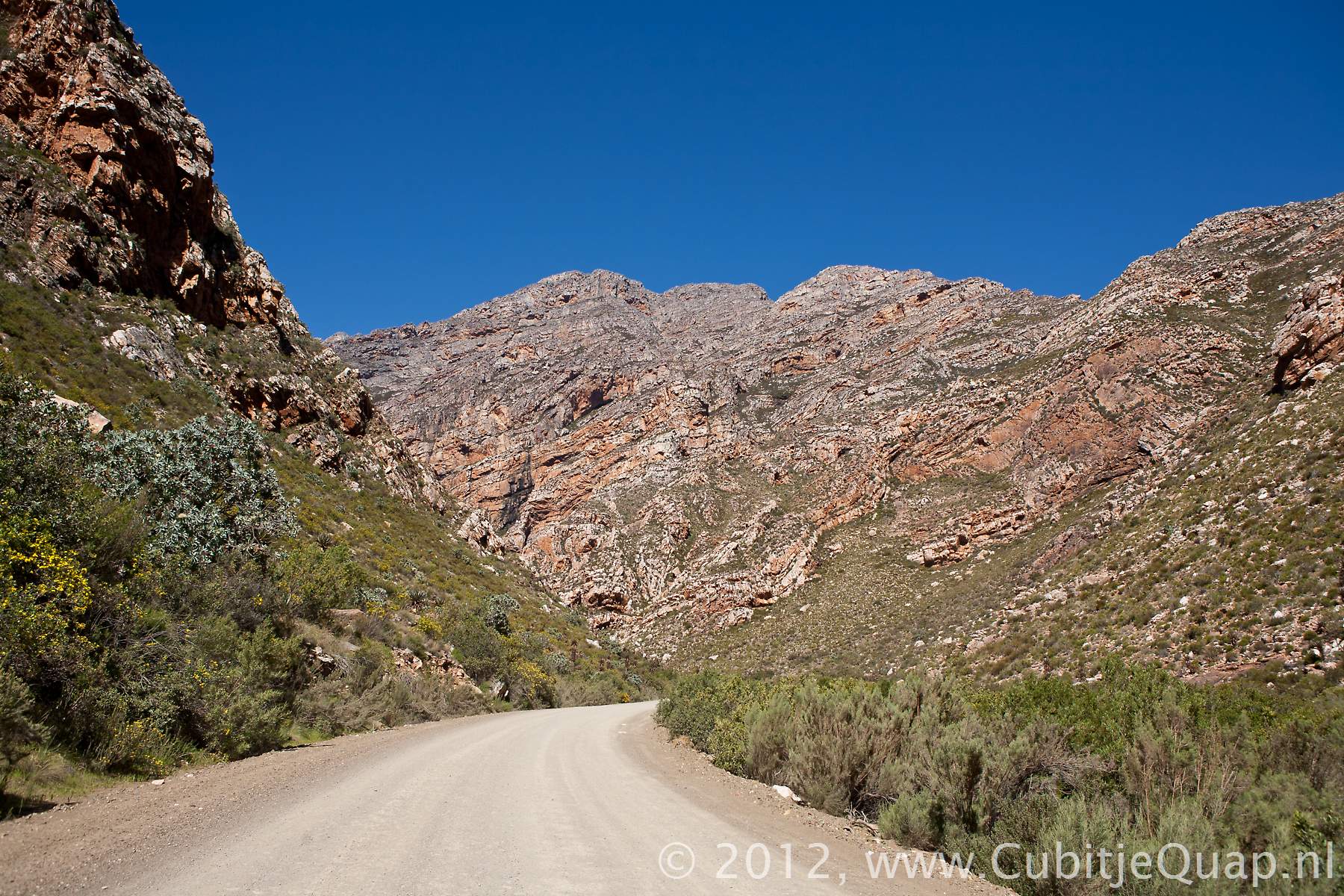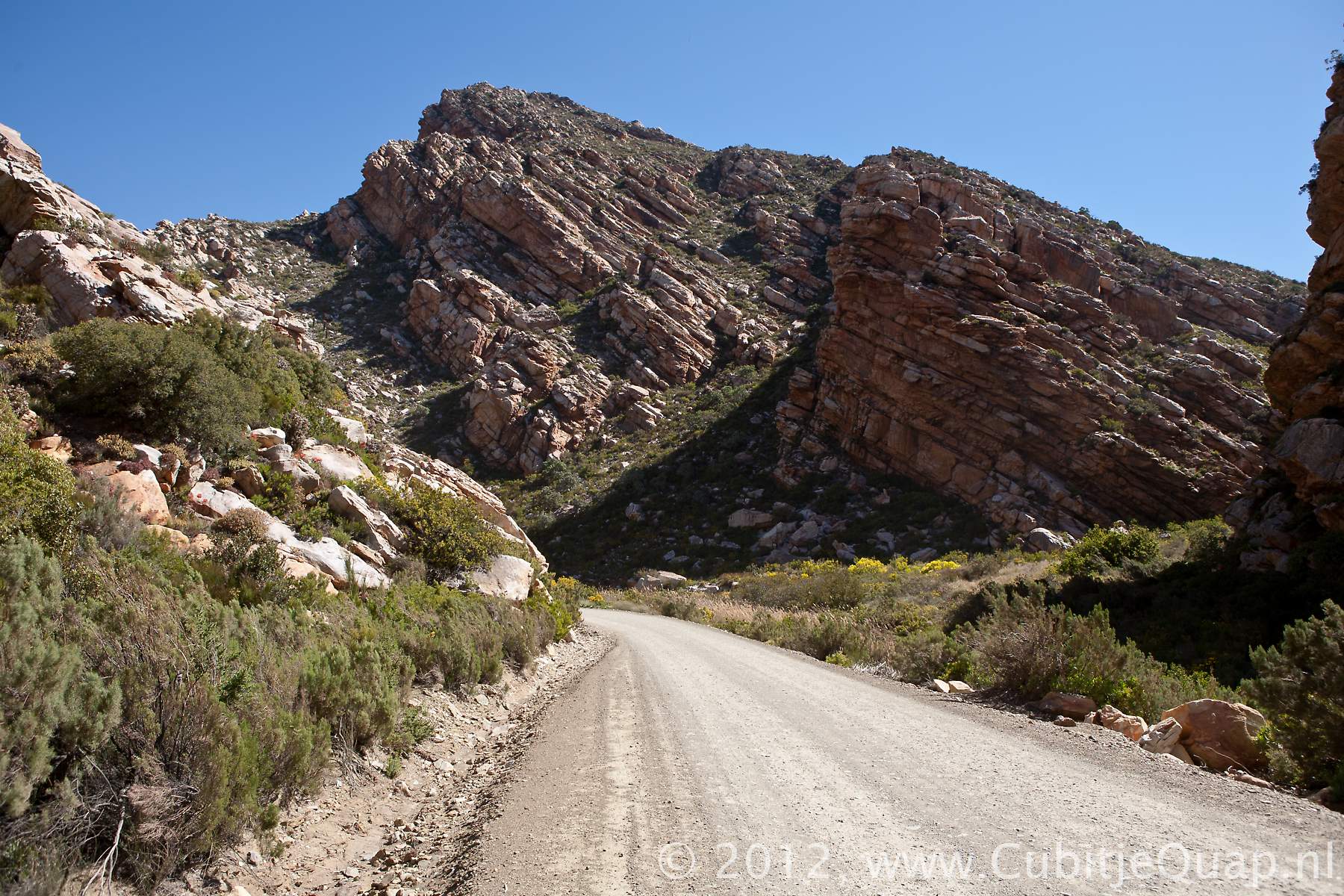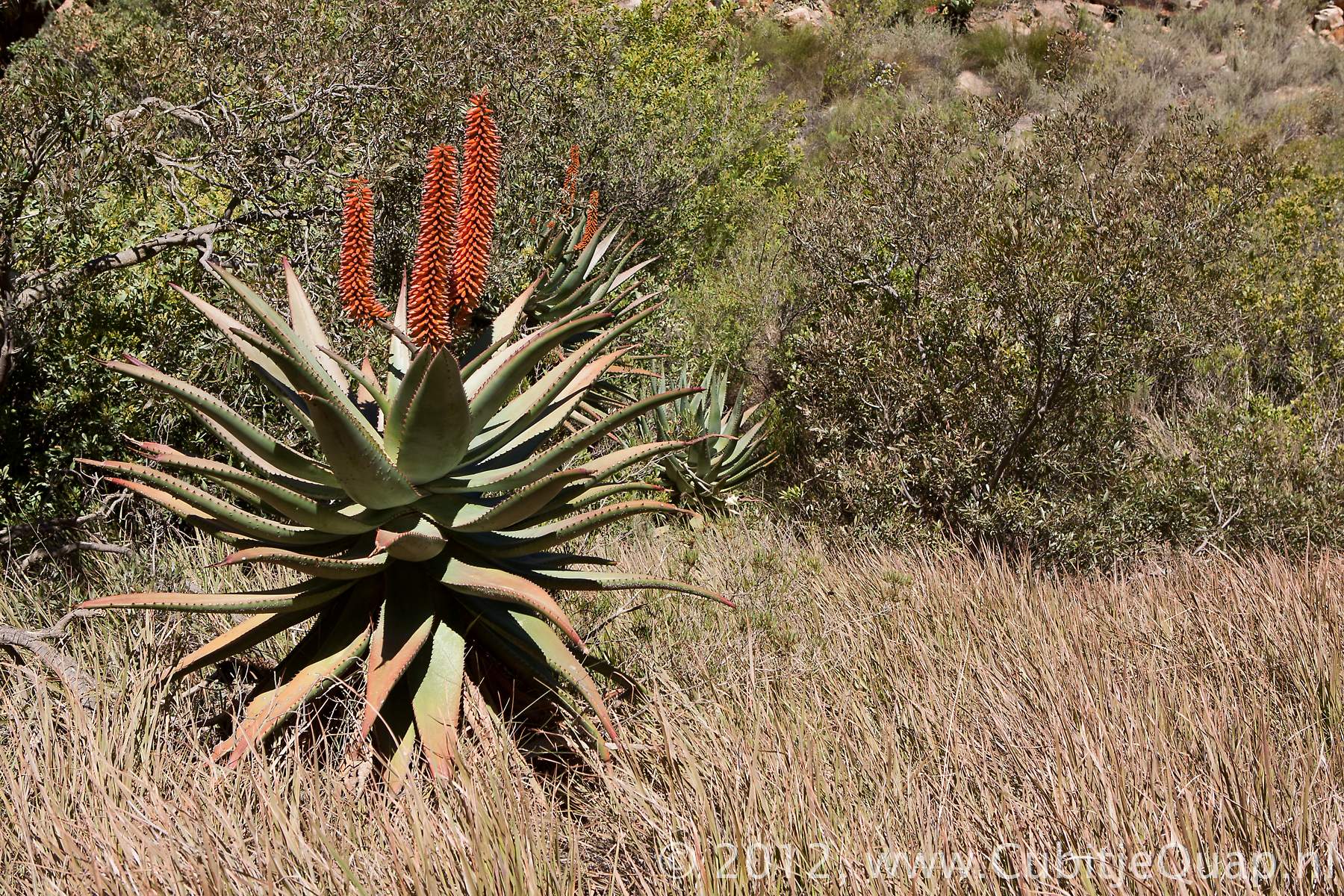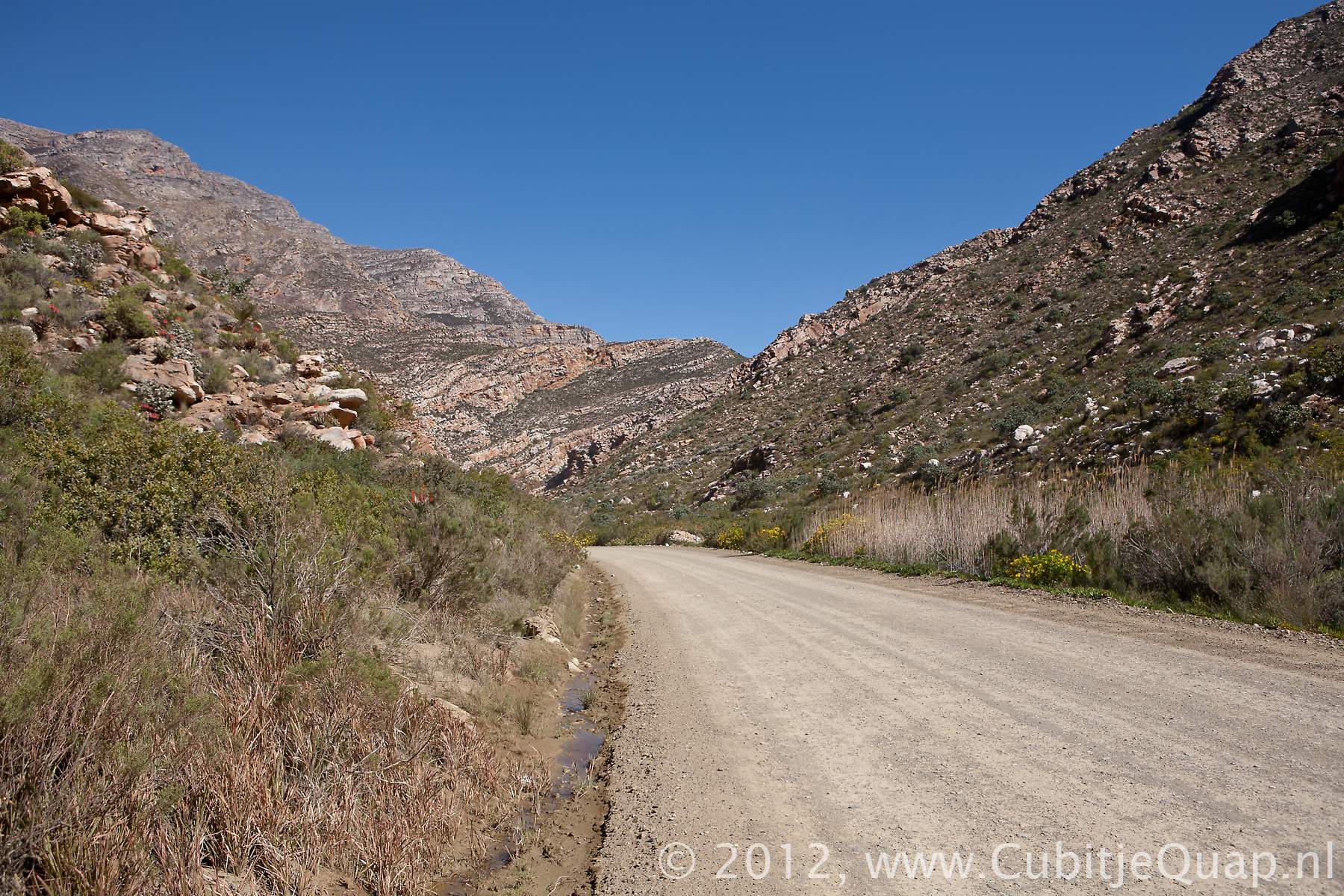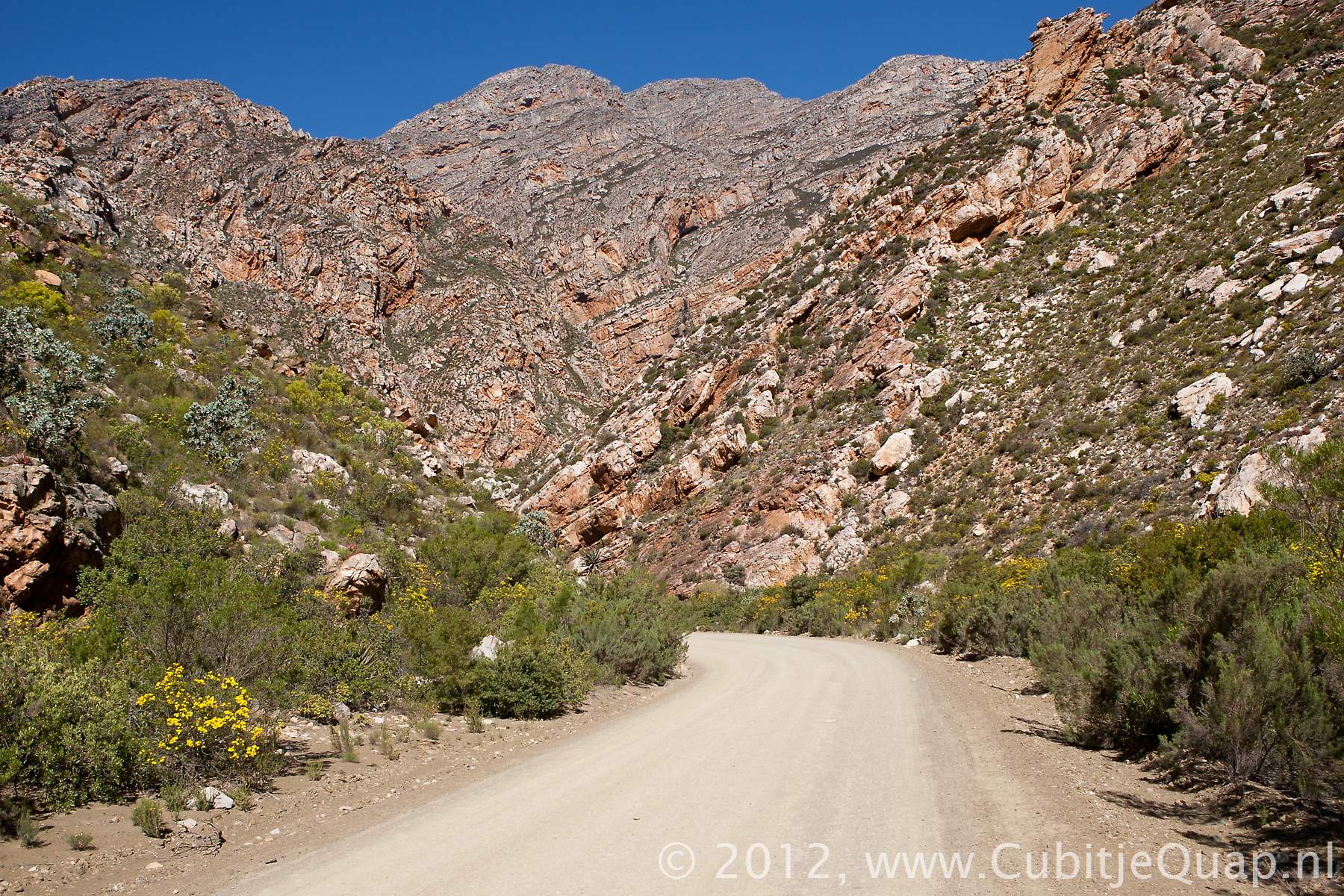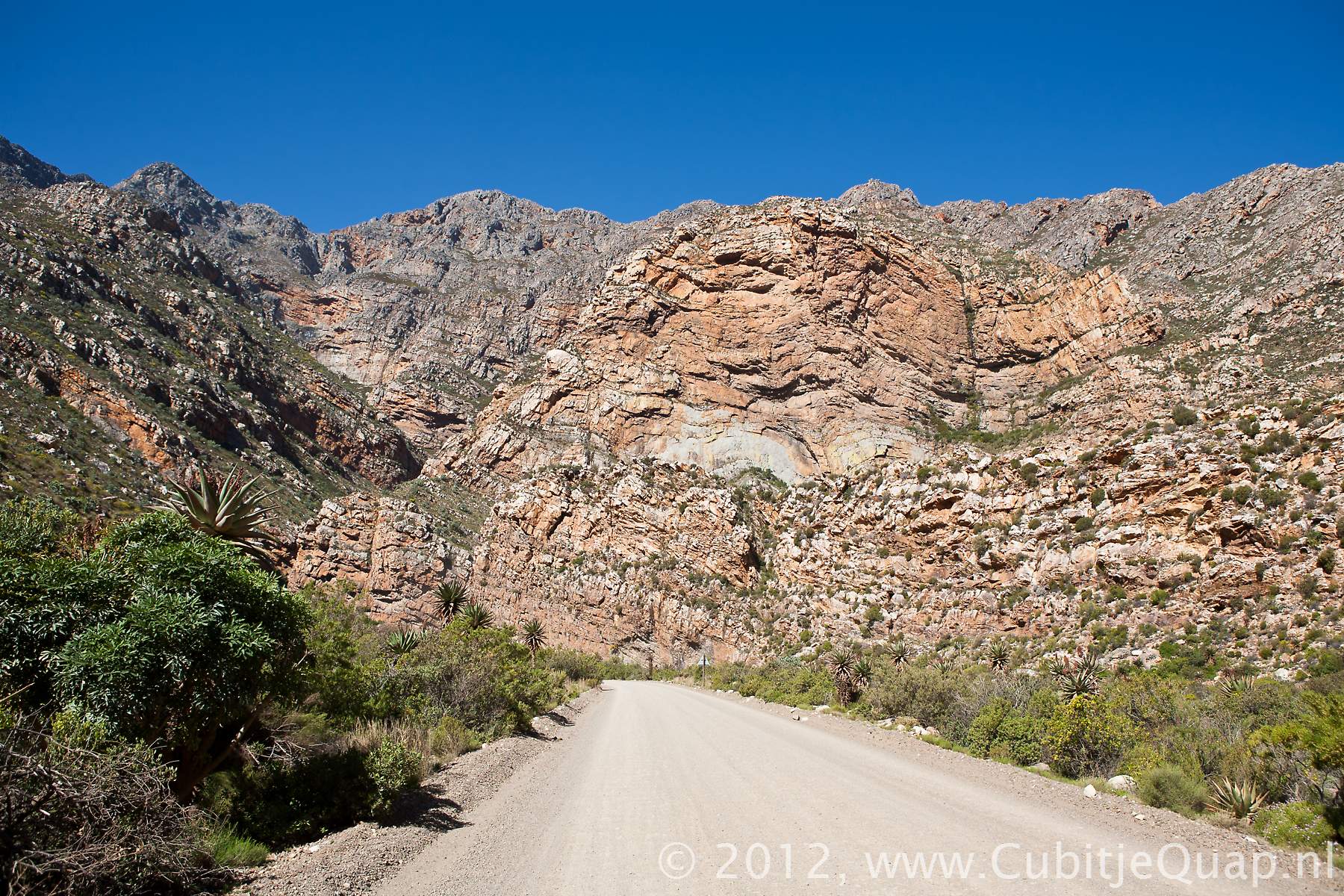The Swartberg Nature reserve (lso a proclaimed UNESCO World Heritage Site) covers a narrow but long strech of 121.000 hectares of the mountain range which is open to the public.
Thomas Bain first designed the route of the pass. His masterplan was approved by the government in 1880. The first building activitities were executed by Mr John Tassie, he employed 100 people and started working on the Prince Albert side of the mountain in 1881. However, after 13 months of hard labour, only 6 kilometers of road were finished. Then Mr Tassie was declared insolvent and the constructionwork was not continued for a year. Then Thomas Bain took over the responsibility for building the pass. For labour he used 200 to 240 convicts.
The Swartberg pass was officially opened on january 10th in 1888.
The road is penetrates the Klein Swartberg Mountain, it is at some places very narrow, while precipices of rock tower like walls on both sides.
The nameThere are two theories about the origin of the name. The first explanation is that the poort was named after Reverend Leopold Zerwick (a Berlin Mission Society preacher who was stationed at the former mission station of Zoar south of the poort), where the pronounciation of this name changed to Seweweekse Poort.
Another theory is that it refers to local history for example: - It took the authorities a period of seven weeks to capture a band of highway-men that were hiding in the area
- A farmer got trapped in flashfloods for seven weeks
- The time it took brandy smugglers to get their heavy wagons through the poort was seven weeks.

